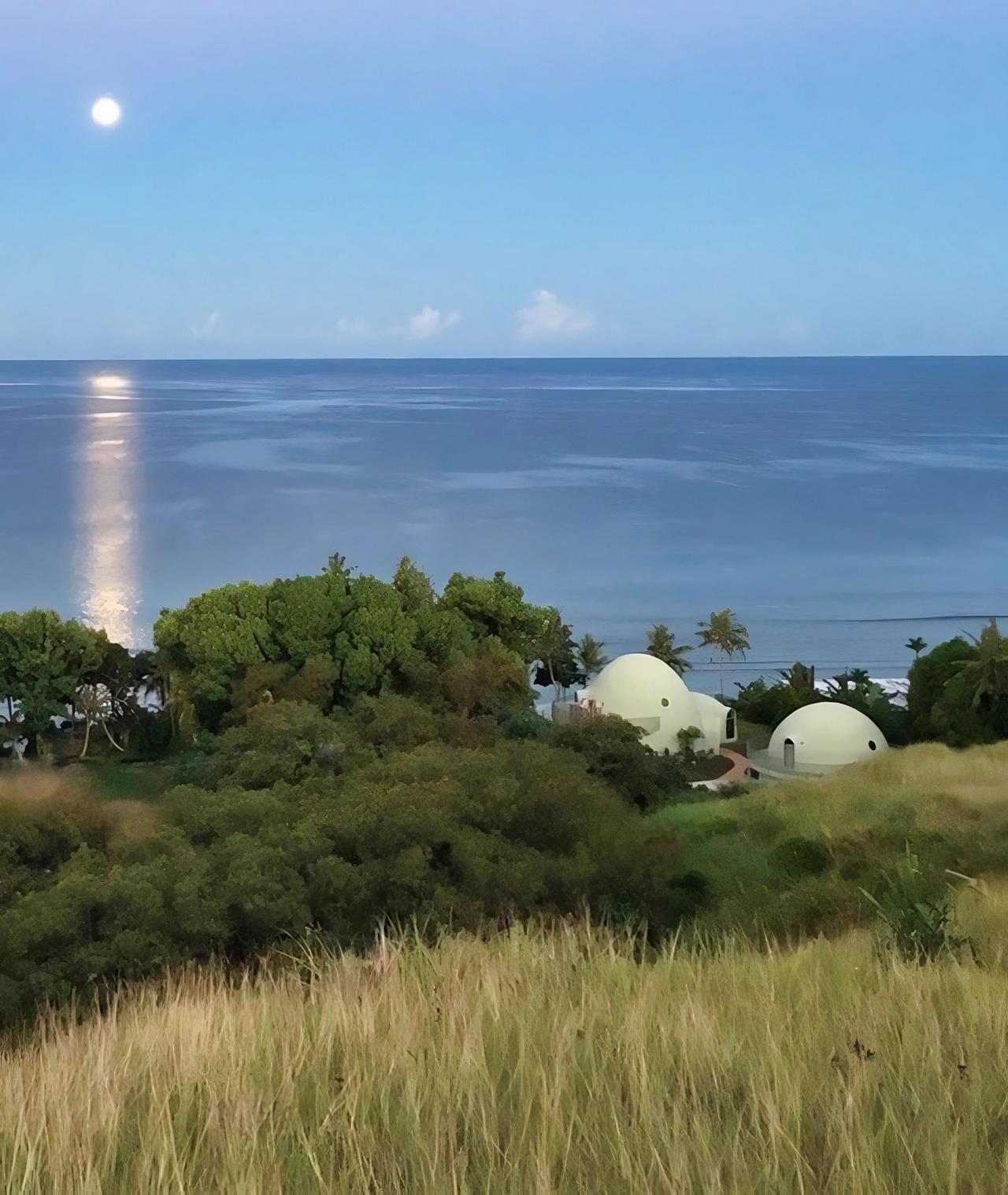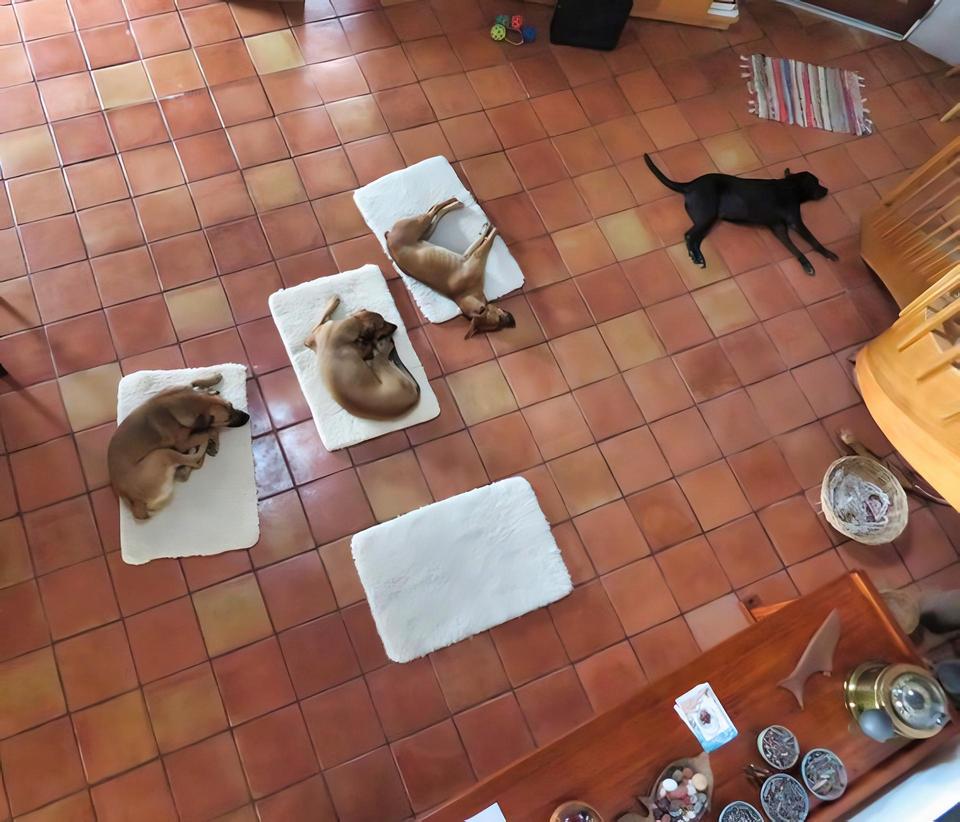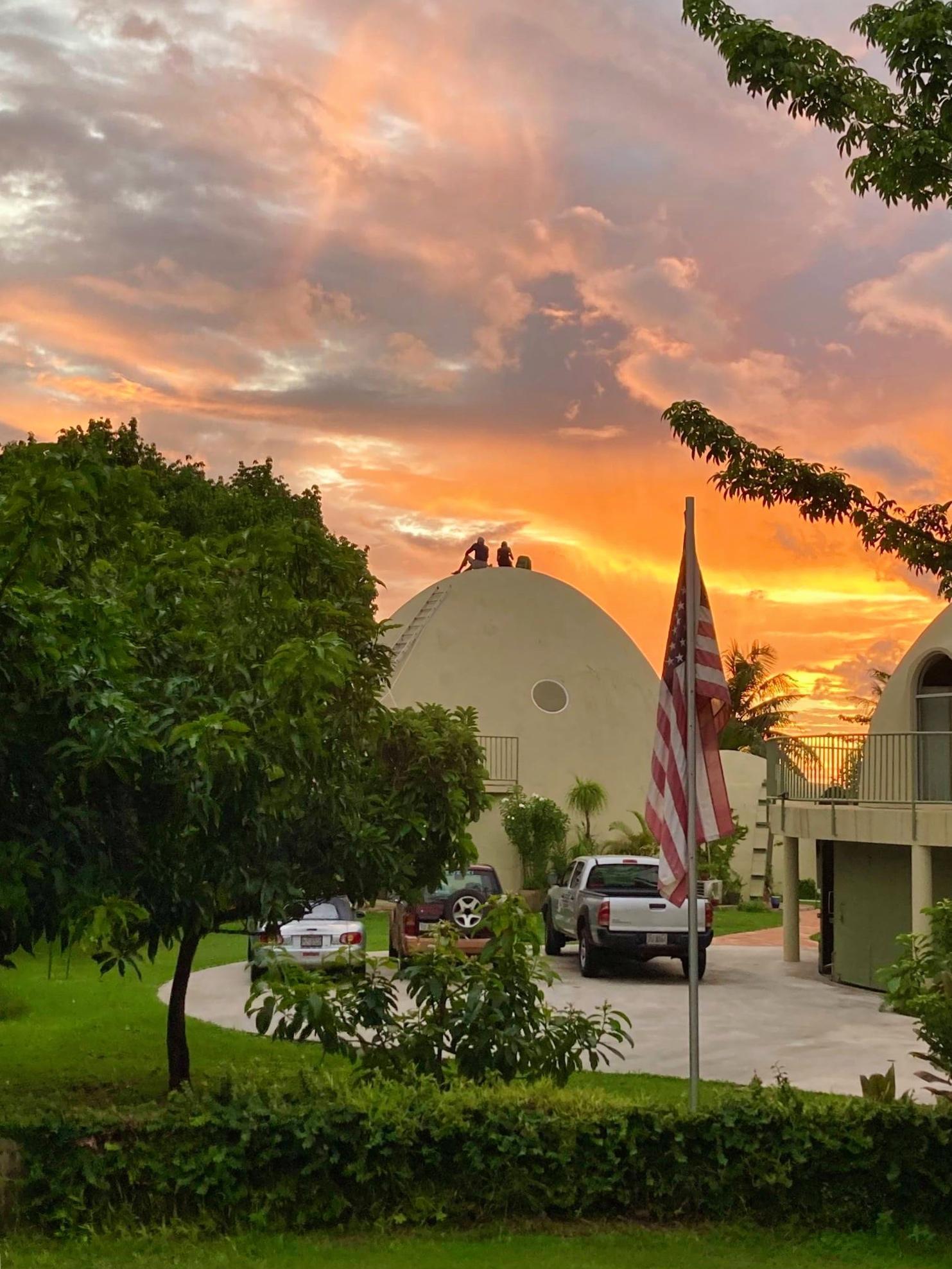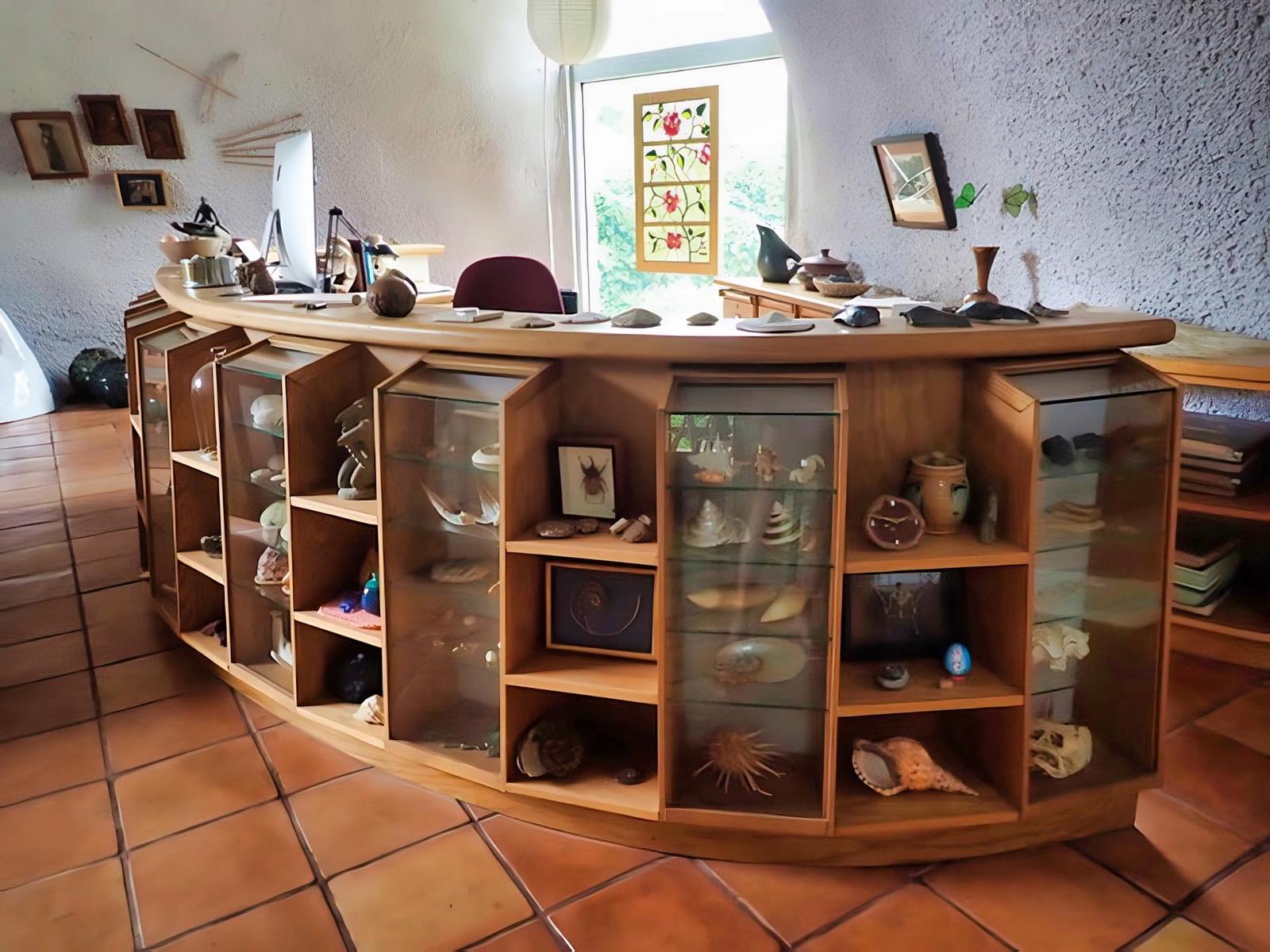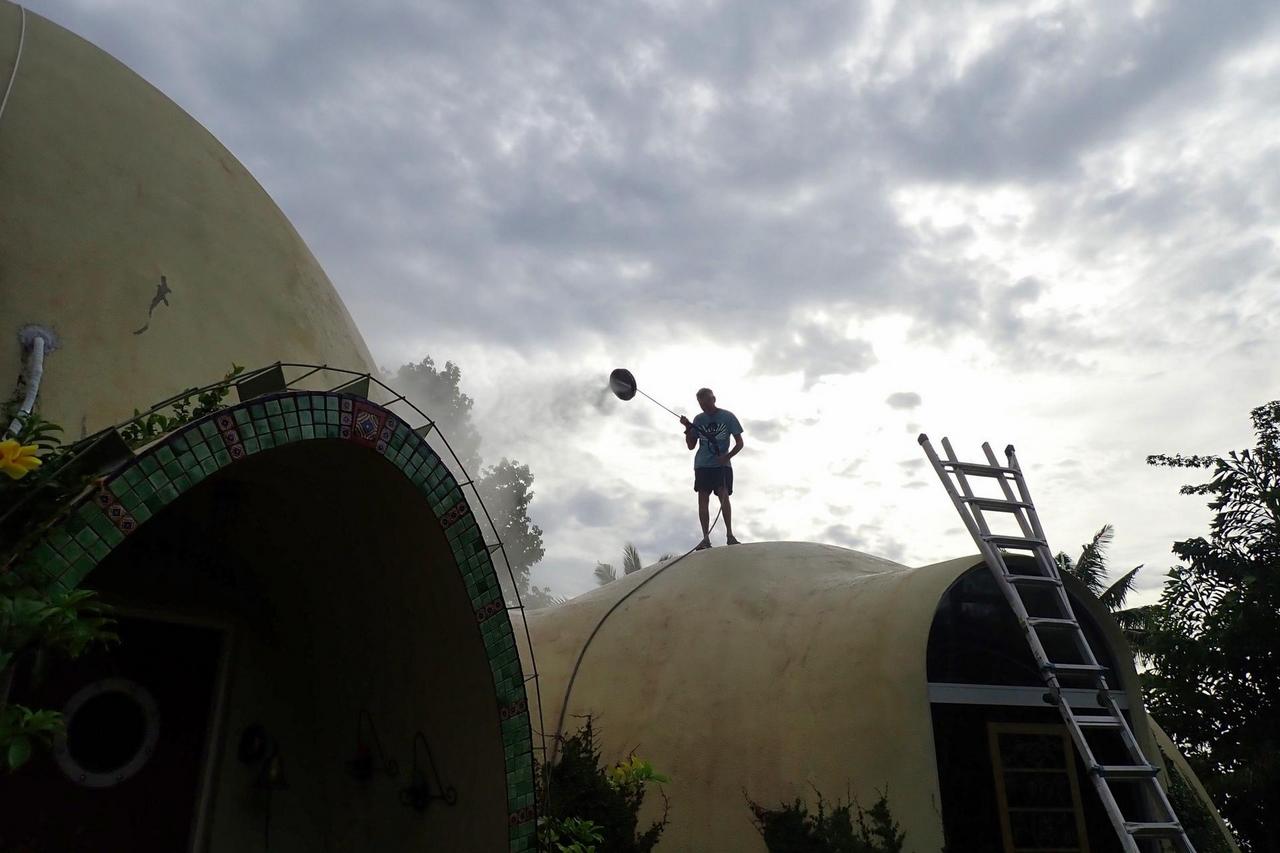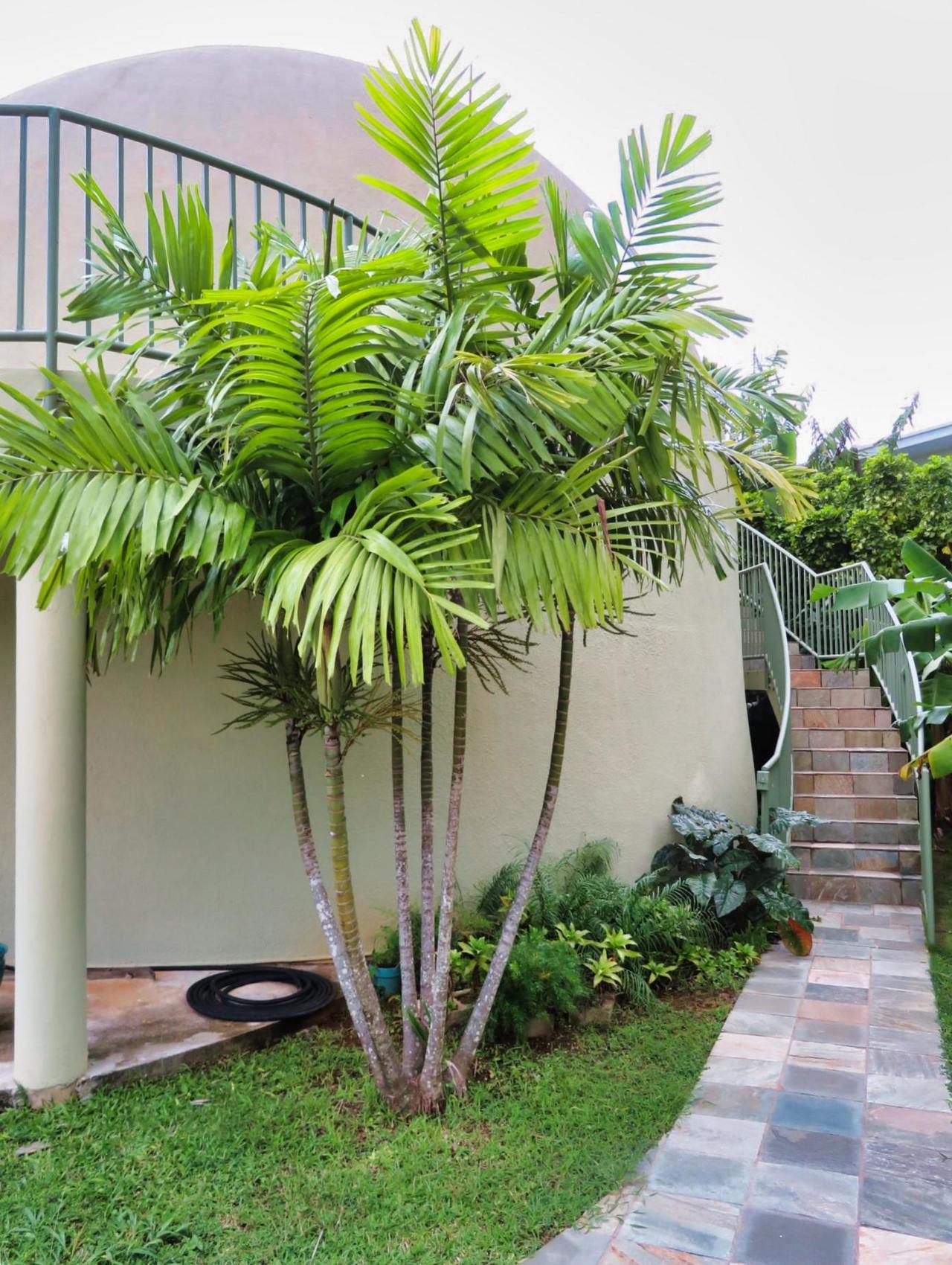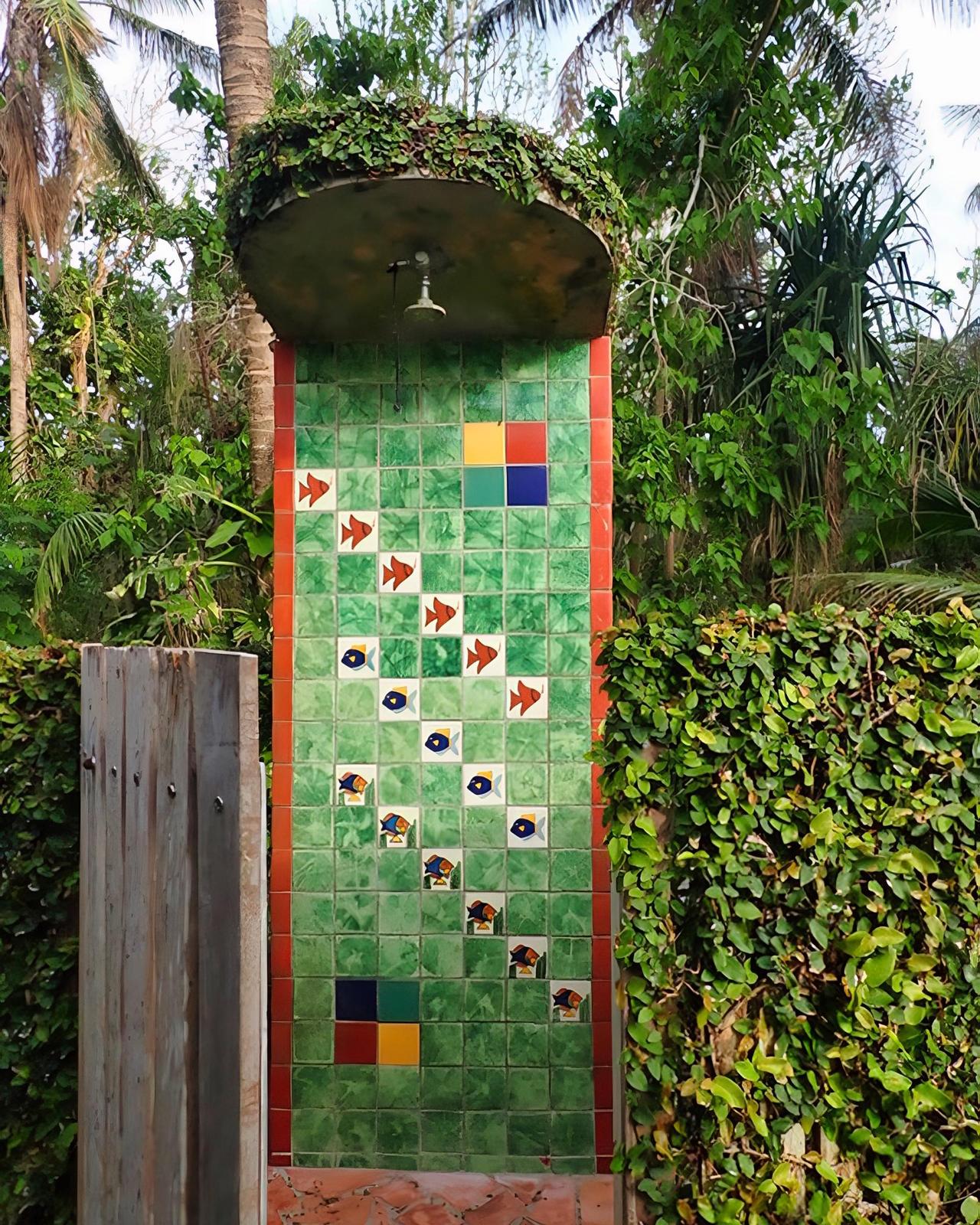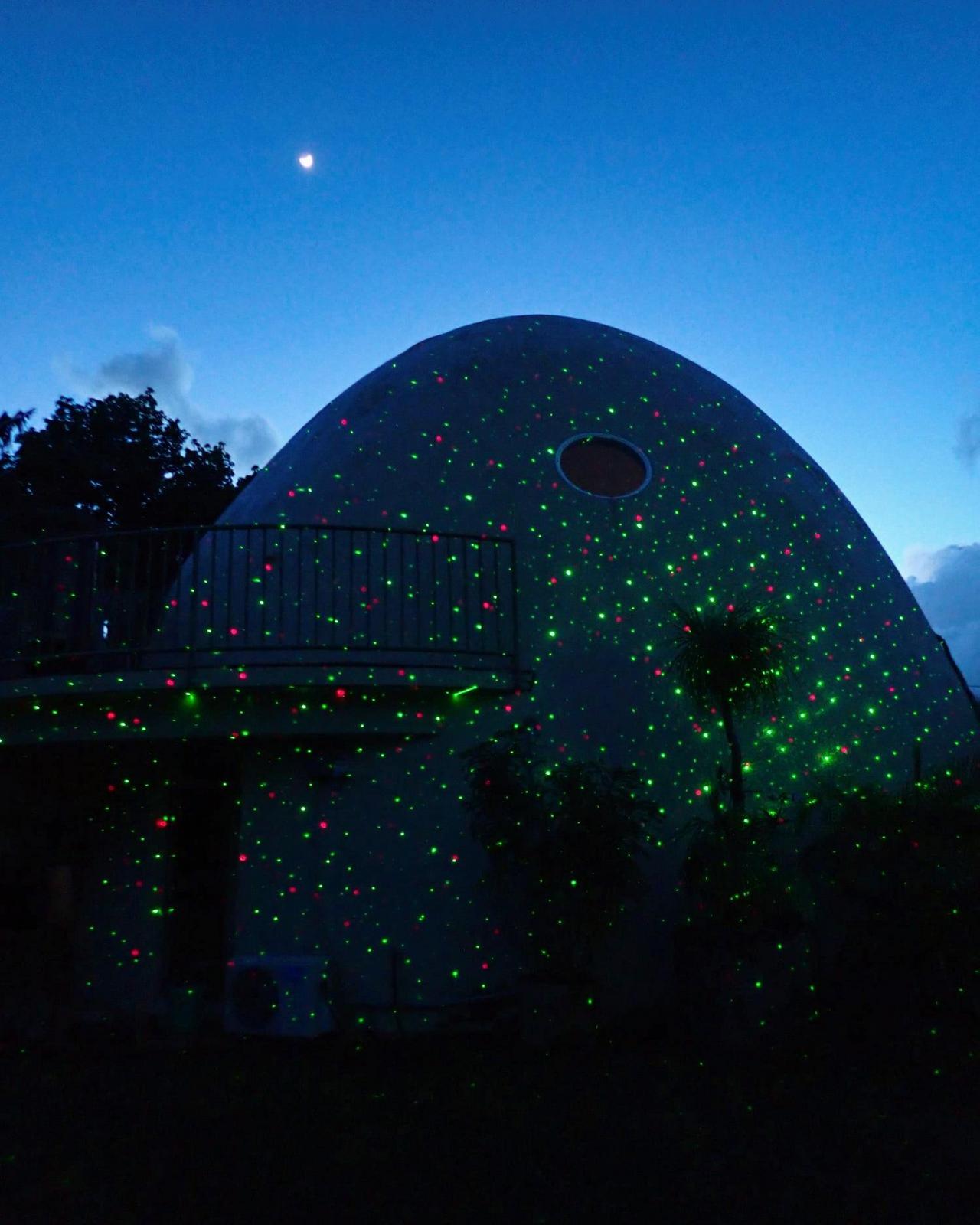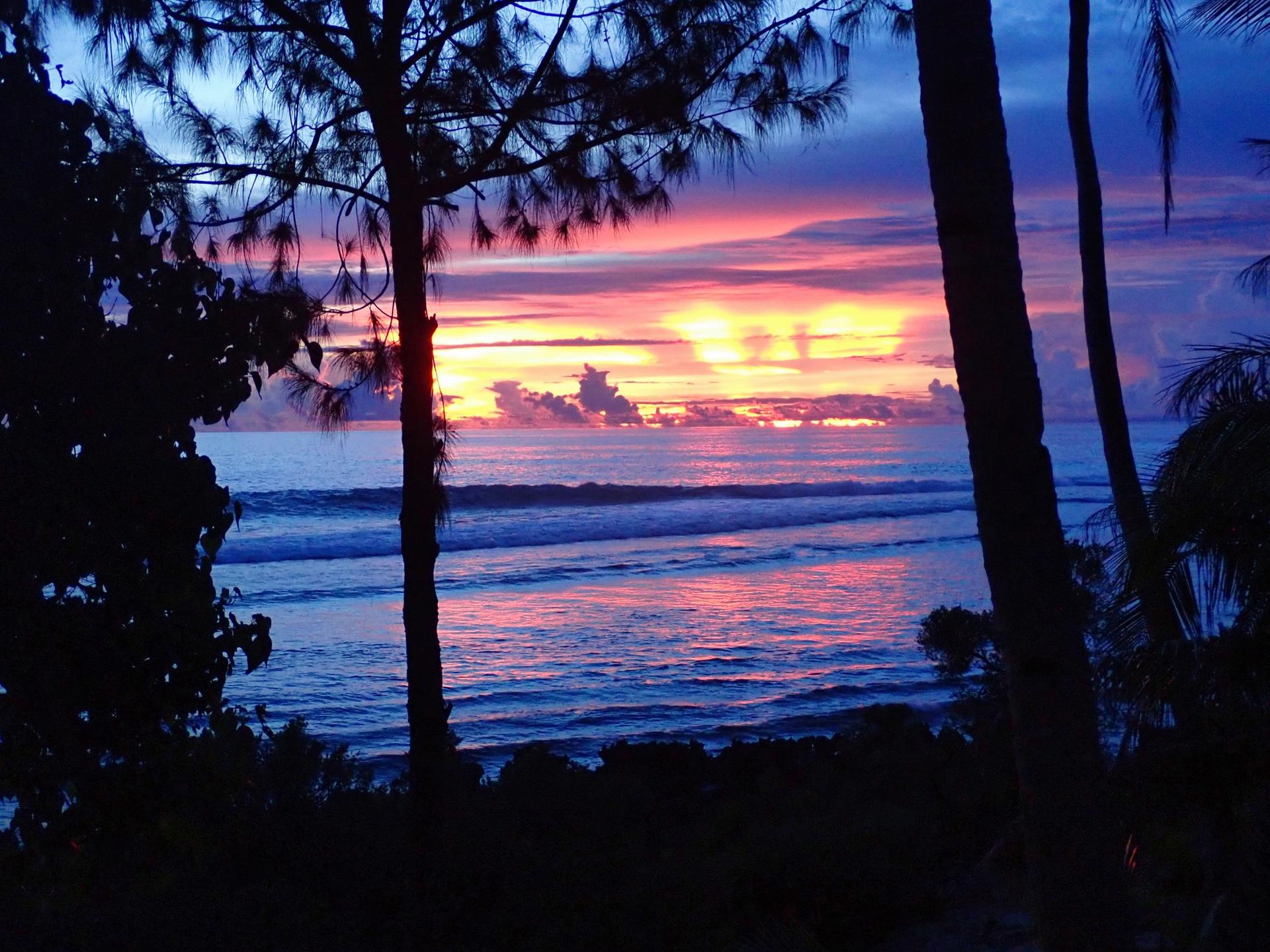Tasi Dome Proves Trustworthy in Typhoon
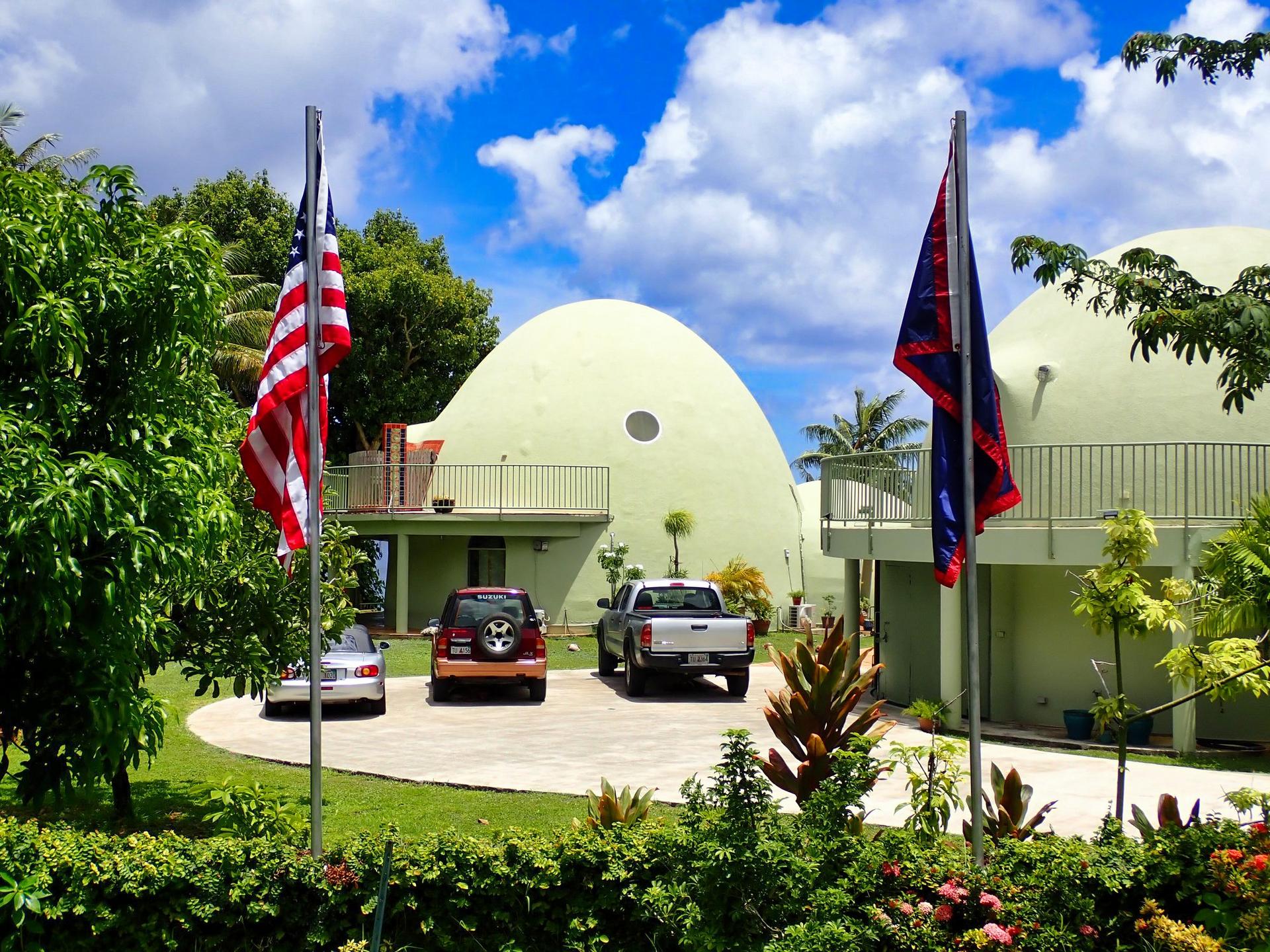
Stanley Hall and Linda Tatreau chose to build their Monolithic Dome home—the Tasi Dome—on the beautiful island of Guam. It is the first Monolithic Dome built in Typhoon Alley and has already weathered one giant storm.
The couple drew circles in the sand on a beach in Mexico, imagining the house they someday would share. Each circle drew them closer and closer to realizing their dreams.
Stanley Hall already knew that he and Linda Tatreau shared an unshakeable love. When they lived in San Diego, Linda told him, “I’ll follow you anywhere—as long as it’s hotter than here.”
“Stanley’s philosophy is moderation in all things,” Linda said. “Mine is if it’s worth doing, it’s worth overdoing. We balance each other.”
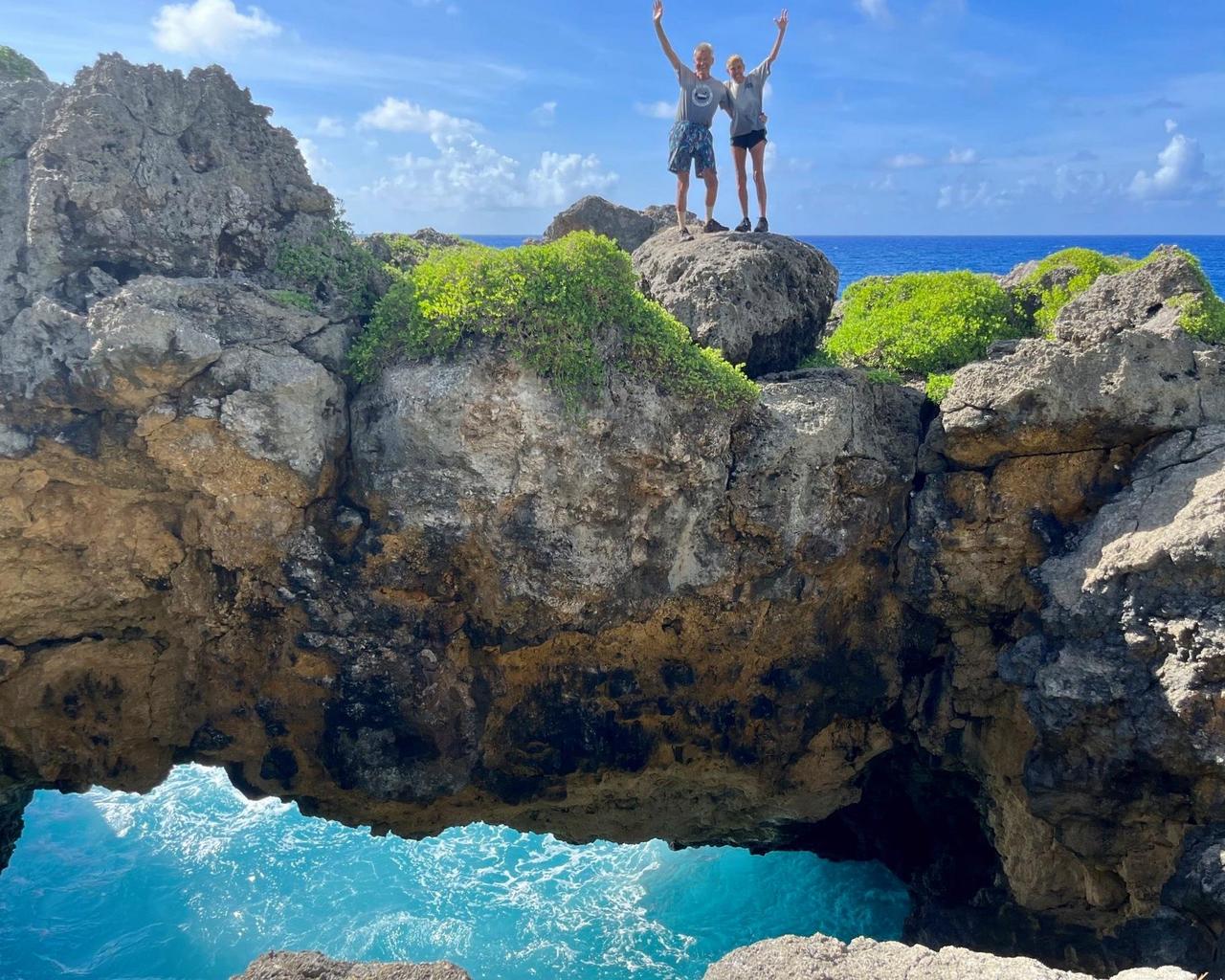
Stanley and Linda step with courageous caution along limestone rich in clay that often overlays the volcanic rock of Guam.
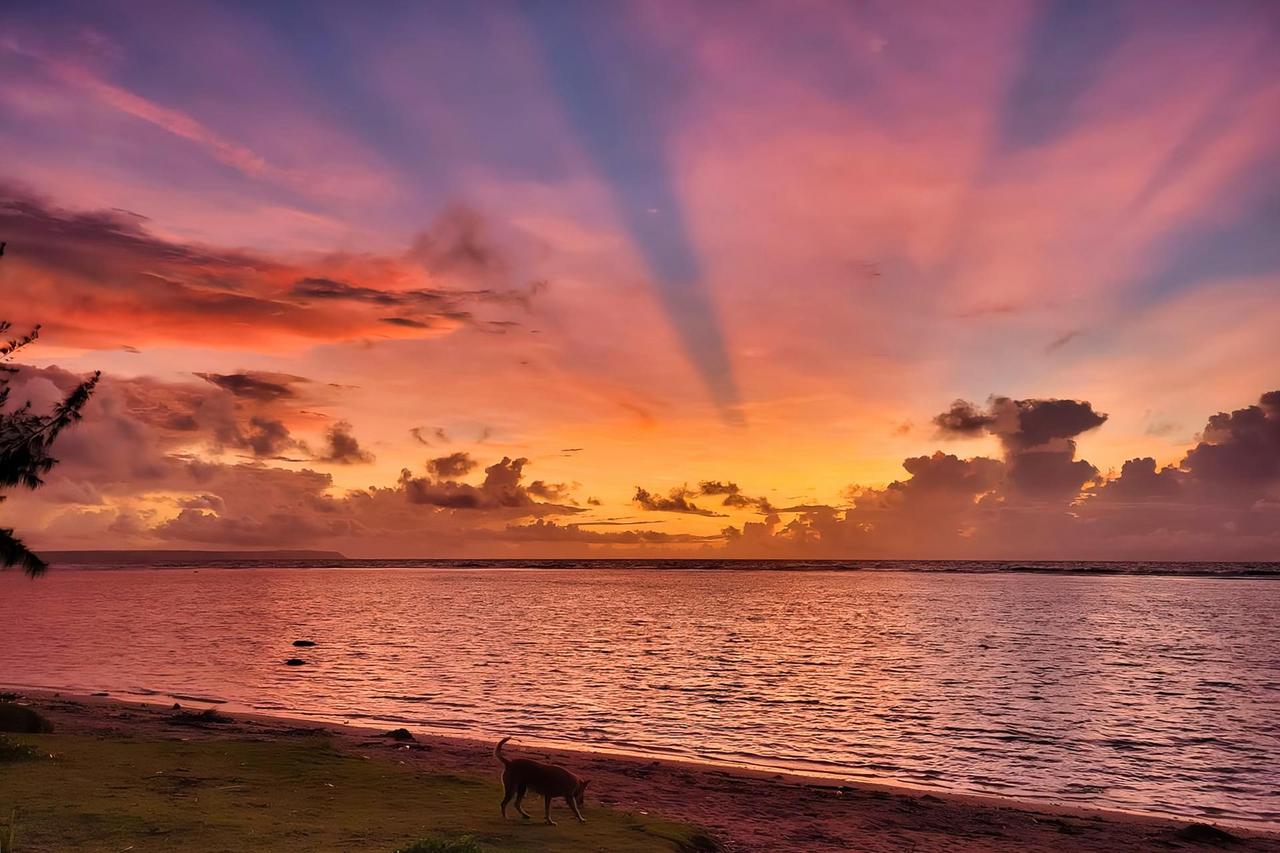
Sunrise and sunset don’t vary significantly in Guam as they do elsewhere, because the island’s so close to the equator. Malesso (formerly Merizo) is the closest to the equator of all populated towns in the United States.
It didn’t take them long to realize that when they decided to do something together, it got done. They soon ended up living in Guam, the second-largest U.S. territory and the largest of the Mariana Islands. True to Linda’s plans, they found a place hotter than San Diego. The town of Merizo—also called Malesso—is the closest town in the United States to the equator. Guam, a thirty-mile-long island in Micronesia, had a population of 172,952 in 2023, and this year, the U.S. territory had 515,000 tourists, down from its 2019 peak of 1.63 million tourists. The sun rises 14 hours earlier in Guam than in the Eastern United States, and it’s often called “Where America’s Day Begins.”
Linda and Stanley share an abiding love of the ocean, and Linda called her job teaching marine biology “the best job in the Pacific.” Stanley, a harbor boat pilot, worked 26 years for Cabras Marine Corporation on ocean charters, harbor operations, and as senior pilot and operations manager. Linda spent 25 years teaching marine biology and advising Marine Mania, a group of high school students. Her expeditions include the University of Hawaii’s Mud Volcanoes from the Mantle (Ooze Cruise) expedition in 2003, and she was the outreach person for the Nereus expedition to the Challenger Deep in 2009. On a seven-week ocean expedition, Linda spied an ad for Monolithic Domes and told Stanley: “I’ve found our dream home.”
The couple already had work they loved in the place they had chosen to be for the rest of their lives, and they hadn’t expected to move to a new house again. Nonetheless, it was time to begin. As Henry David Thoreau said, “If you have built castles in the air, your work need not be lost; that is where they should be. Now put foundations under them.”
Friends suggested a beautiful beachfront property in the south of Guam, and the dream that began as circles on the sand became a reality. Linda said the building process took five years, not only because the permitting process took time but also because they were determined to have no bank financing. They paid for each step as they went along. They named their dream house “Tasi Dome” since “tasi” is the Chamorro word for “ocean.”
“Linda and I are in awe of the house and a bit disbelieving that anything that wonderful is ours,” Stanley said in an email during the building process. “We’ve had our share of missteps and do-overs, but that should come as no surprise, as we are complete novices.”
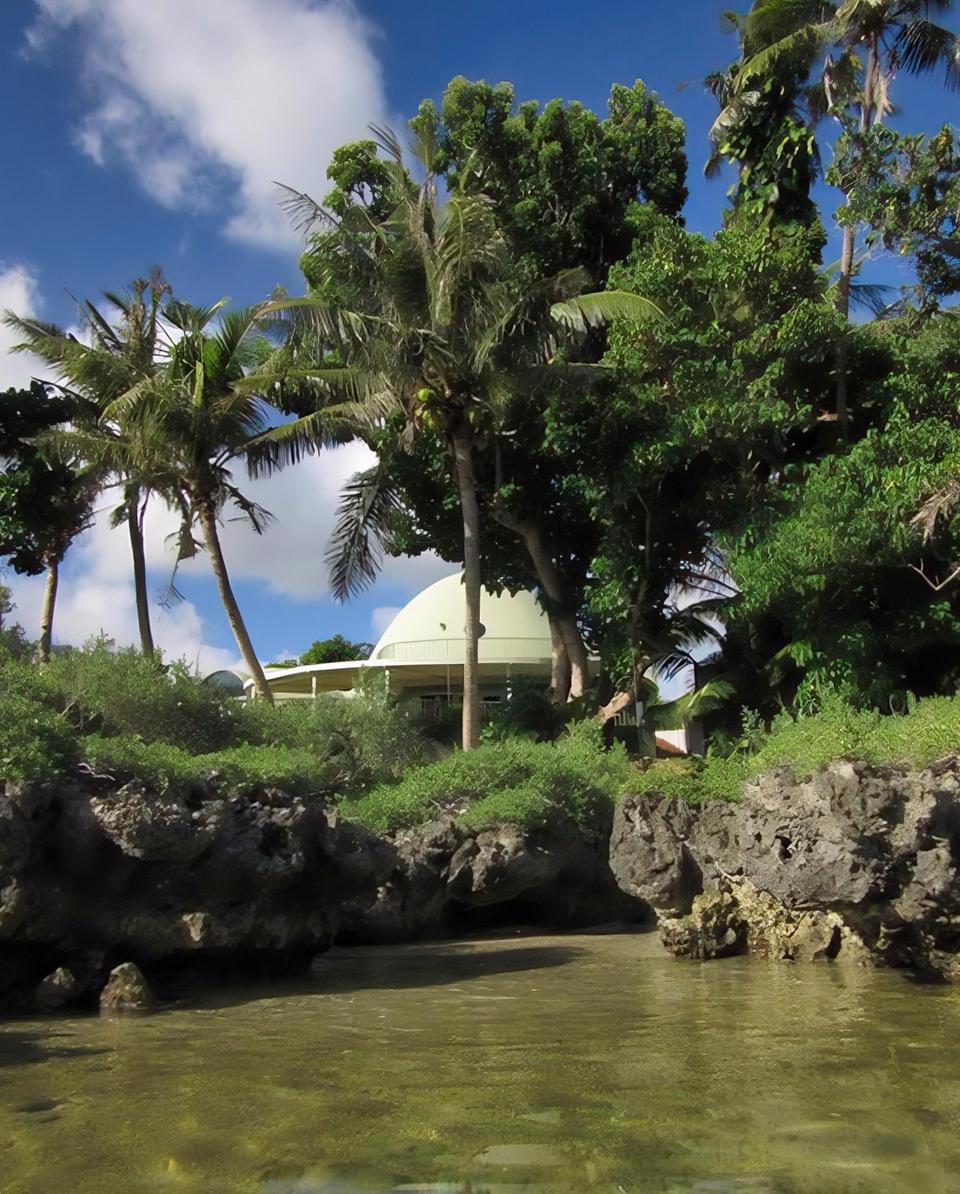
Tasi Dome consists of a main dome and a half sphere, so the couple could put a studio over their garage. They particularly love being able to walk right out the front door and go swimming.
Tasi Dome’s main house is a double dome. One dome is a 36-foot by 27-foot vertical prolate ellipse attached to a 25-foot half sphere. An additional 30-foot half sphere with a 9-foot stem wall houses a studio apartment over their garage.
Stanley said that Tasi Dome became the first Monolithic Dome home built in Typhoon Alley. According to Go Guam, which supports Submarine Forces in the Pacific, “Guam is in COR 4 year-round due to our location in typhoon alley until a higher condition is set. It means any destructive winds could be upon us within 72 hours.”
When Typhoon Mawar hit in May 2023, all the neighbors left the area, but Linda decided to stay at Tasi Dome. She felt safer there than anywhere. Stanley had traveled to San Diego, and Linda and her two dogs, Enzo and Thunder, rode out the strongest typhoon to hit Guam since 2002. Mawar means “rose” in Malay, but nothing was rosy about the fierce wind and heavy rain. Linda trusted Tasi Dome to shelter and protect both the dogs and her.
“It’s strong in storms,” Linda said. “That’s why we built it.”
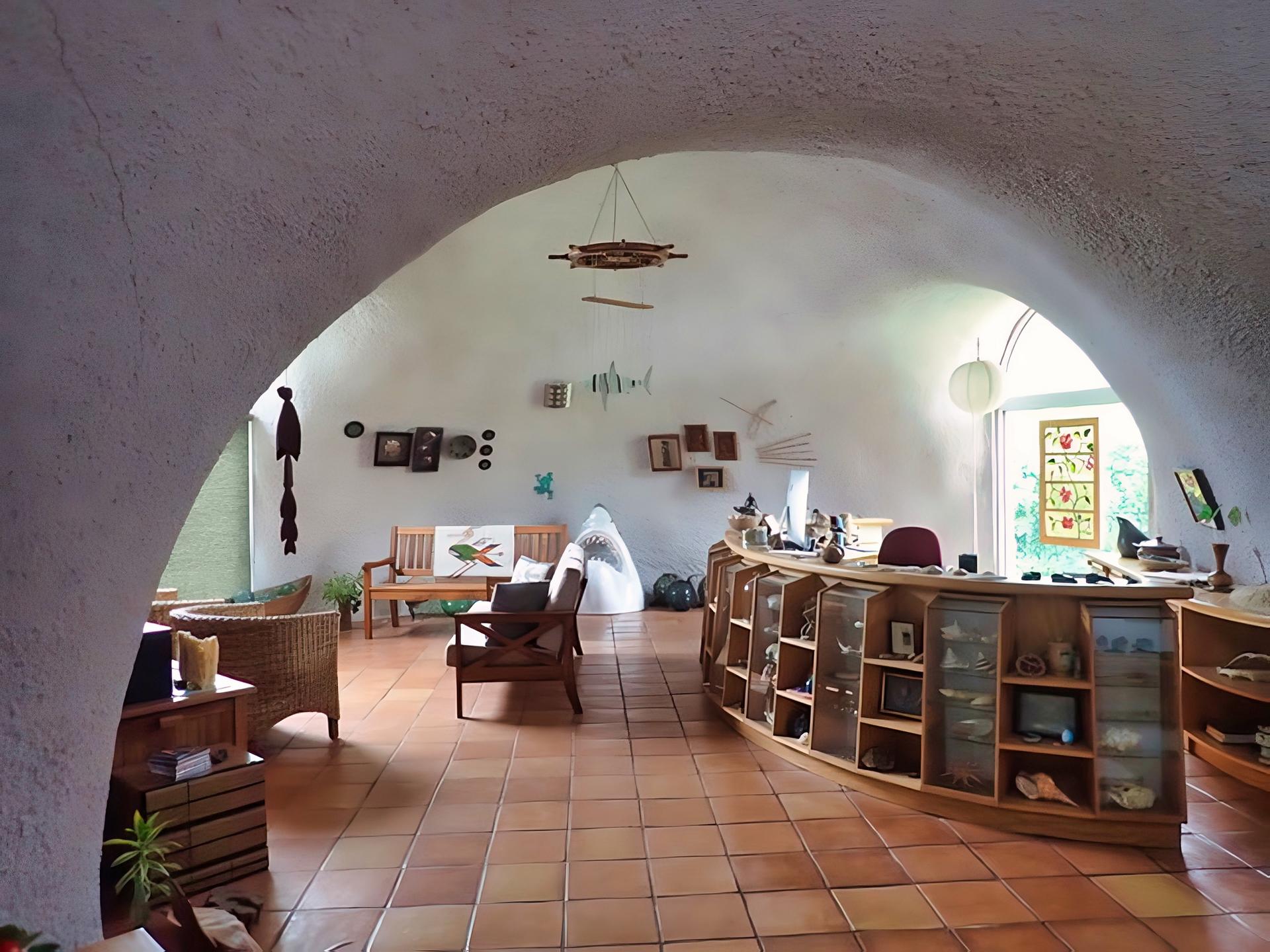
Light glows through the interior of Tasi Dome, which features well-placed windows and rainbow-shaped doorways with no doors to block the flow.
The dogs did fine in the typhoon, too. The worst of it hit the other end of the island, thirty miles away. The central and northern parts of Guam got two feet of rain.
“I couldn’t open the door because the wind would rip it out of my hands, but we managed just fine,” Linda said. “During the day, it got really wild, and it kept going all night. I was worried about the windows, with no storm shutters. Our windows are bullet-proof glass, and they held okay. The neighbors’ typhoon shutters blew off and landed in our yard.”
Guam’s international airport baggage claim and customs area flooded, but Stanley got home as soon as he could to help with the cleanup. The typhoon had felled some of their trees, but the dome emerged unscathed by the storm. Stanley had expressed concerns about the rising storm surge, but uninhabited Cocos Island, one mile from the southern tip of Guam, provided protection.
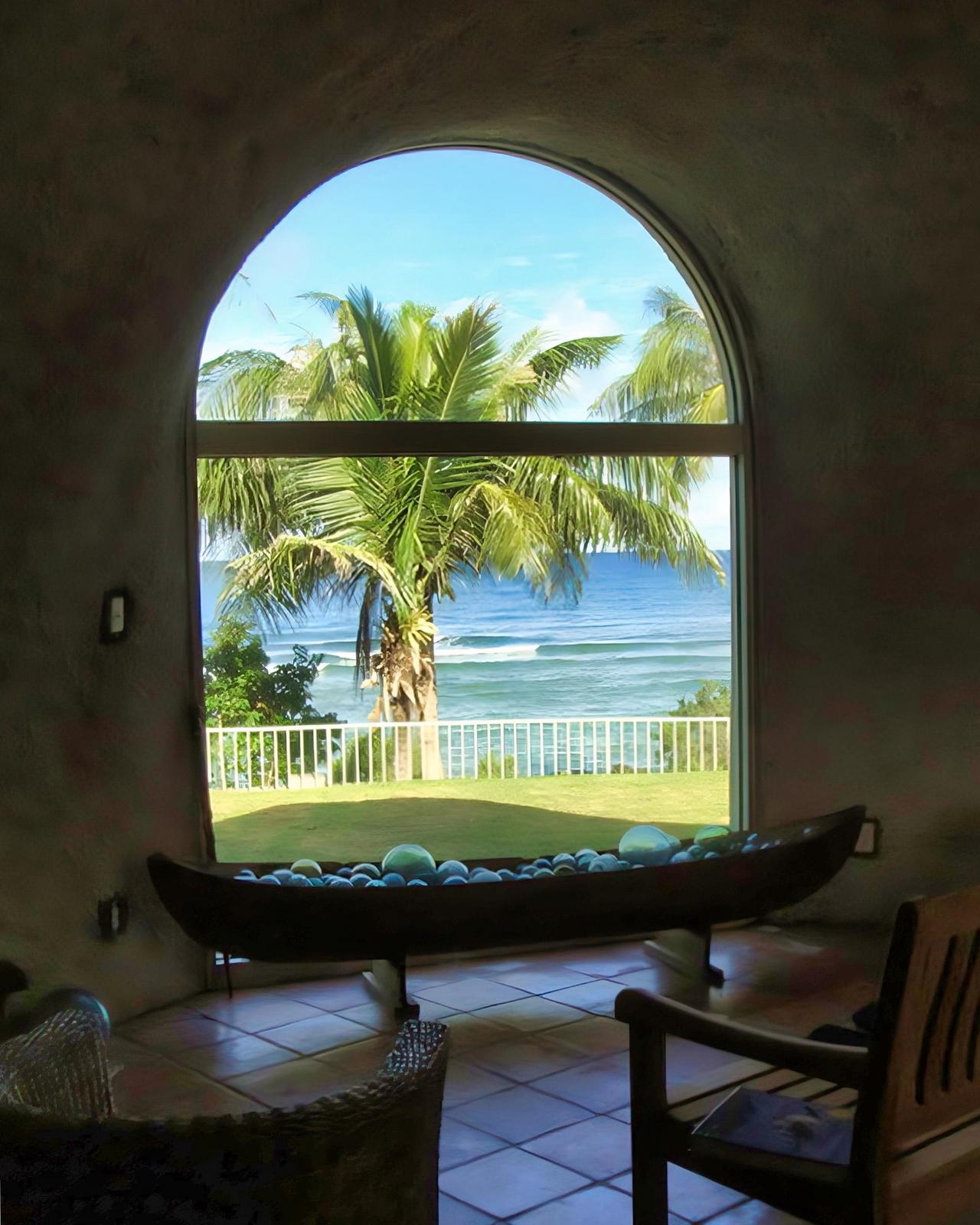
The large windows of Tasi dome show off the beautiful ocean views. Constructed with bullet-proof glass, they provide added security during storm season.
Linda and Stanley both are retiring from full-time positions, yet their work and play in the sea never ends. One of Linda’s former students at George Washington High School, Gabriella Prelosky, now a student at the University of Guam, actually named a new species of diatoms—single-celled algae—“campylodiscus tatreauae,” in honor of Linda.
“We live among such friendly, welcoming people,” Linda said.
Linda and Stanley have lived in the Tasi Dome for eleven years now. Linda says every time she comes home, she realizes anew how magnificent it really is.
“We can swim right out the door,” Linda said. “If I go out one door, I can swim in the ocean. If I go out another door, I can go on a three-mile trail hike with my dogs. It’s better than we ever expected. We live in paradise.”
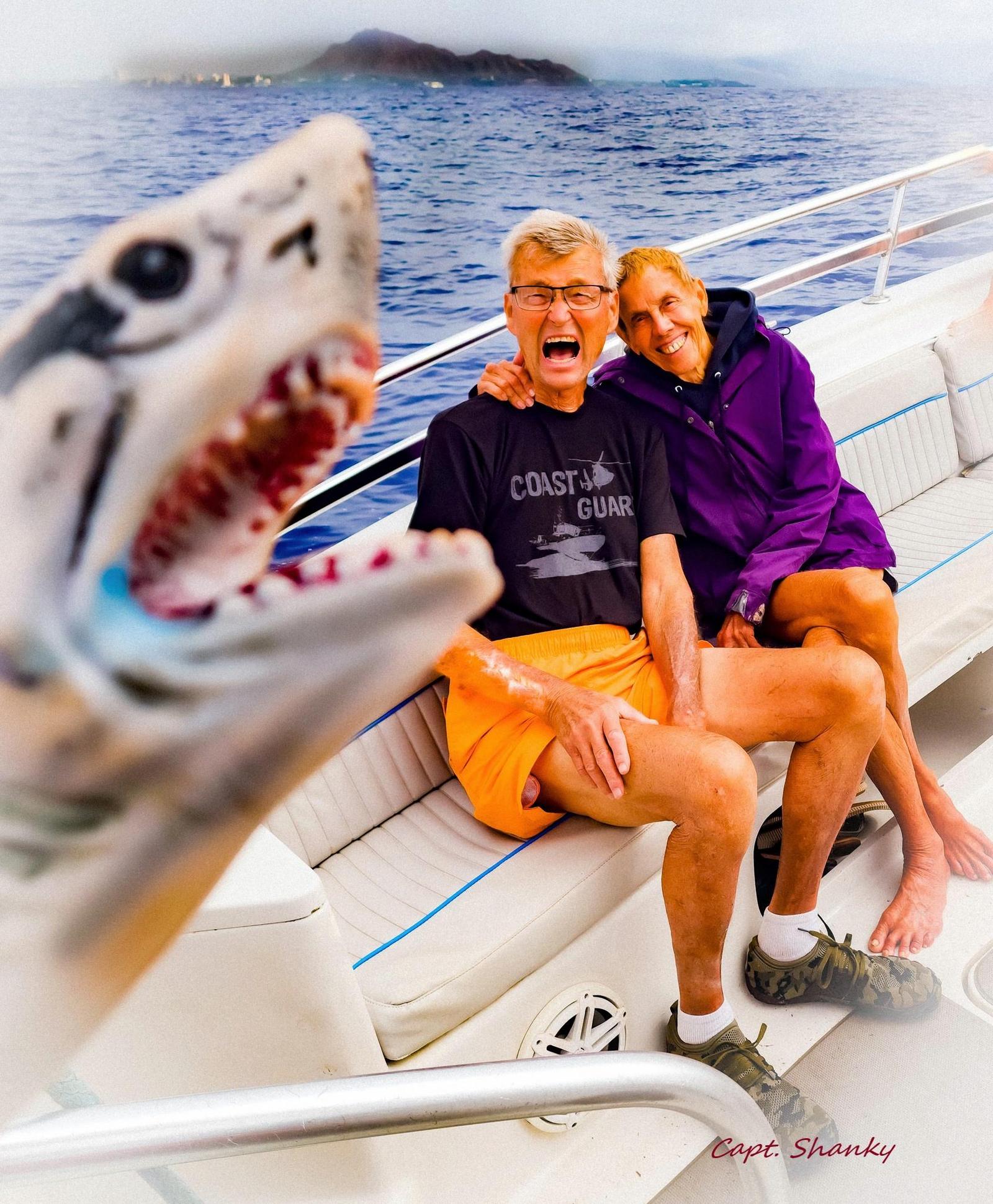
Now that the dome has been built and they’ve eased into retirement, Linda and Stanley have more time than ever to have fun together.
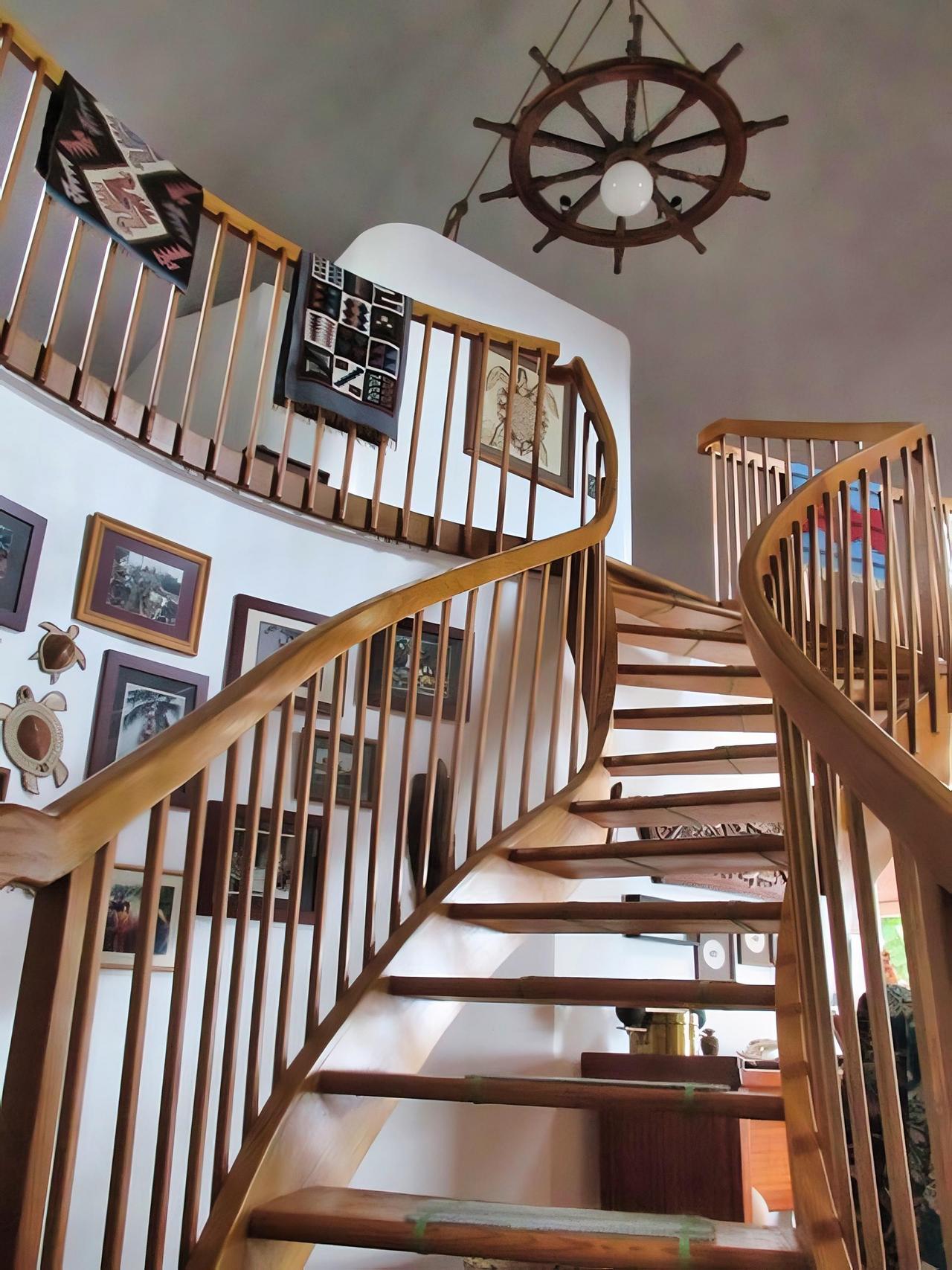
The curves of Tasi Dome call for sinuous, curving stairs and a round light fixture reminiscent of a ship’s helm.
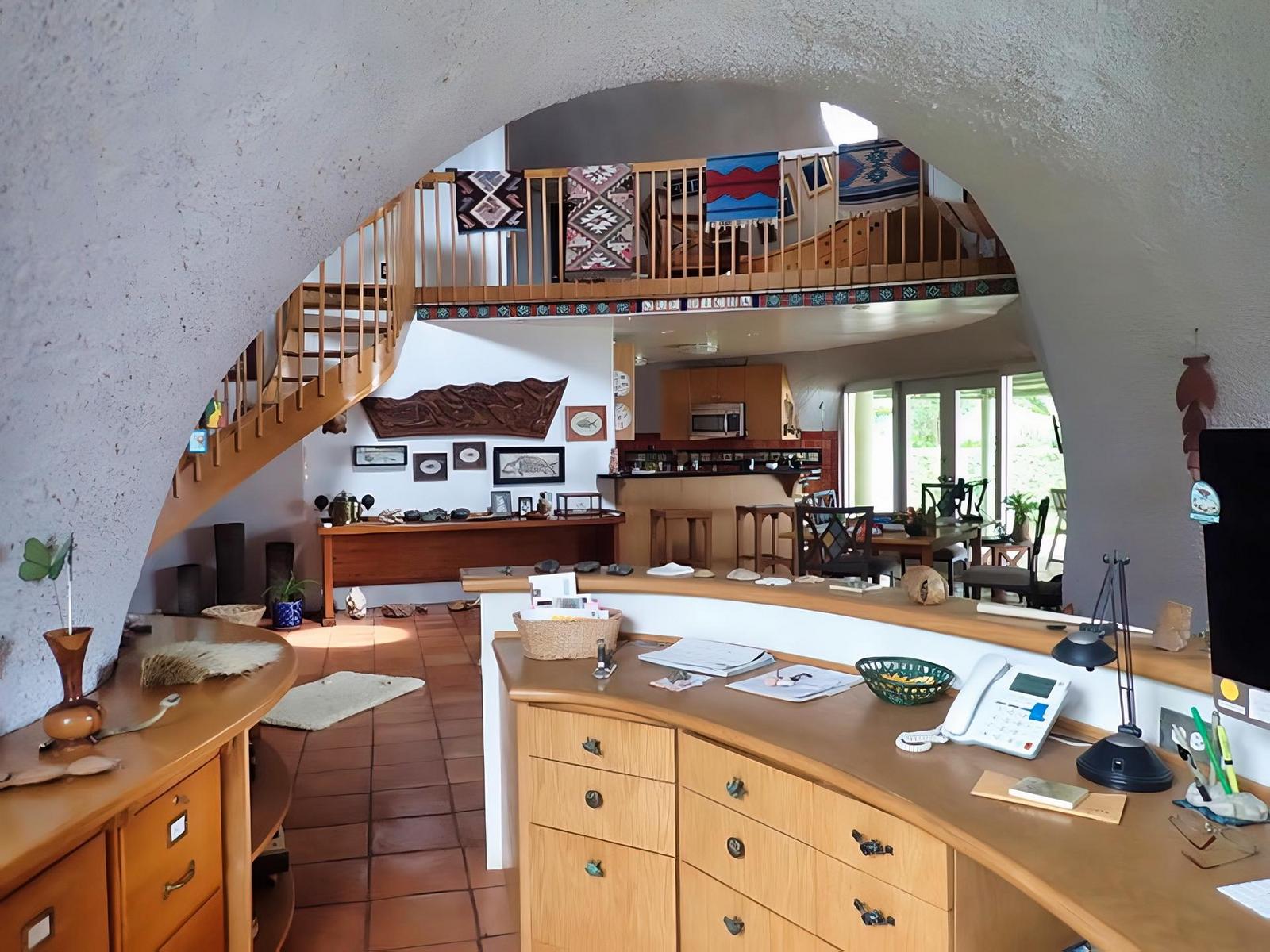
With no need for load bearing walls, Tasi Dome offers an expansive interior incorporating places for work, dining, and dreaming without interruption.
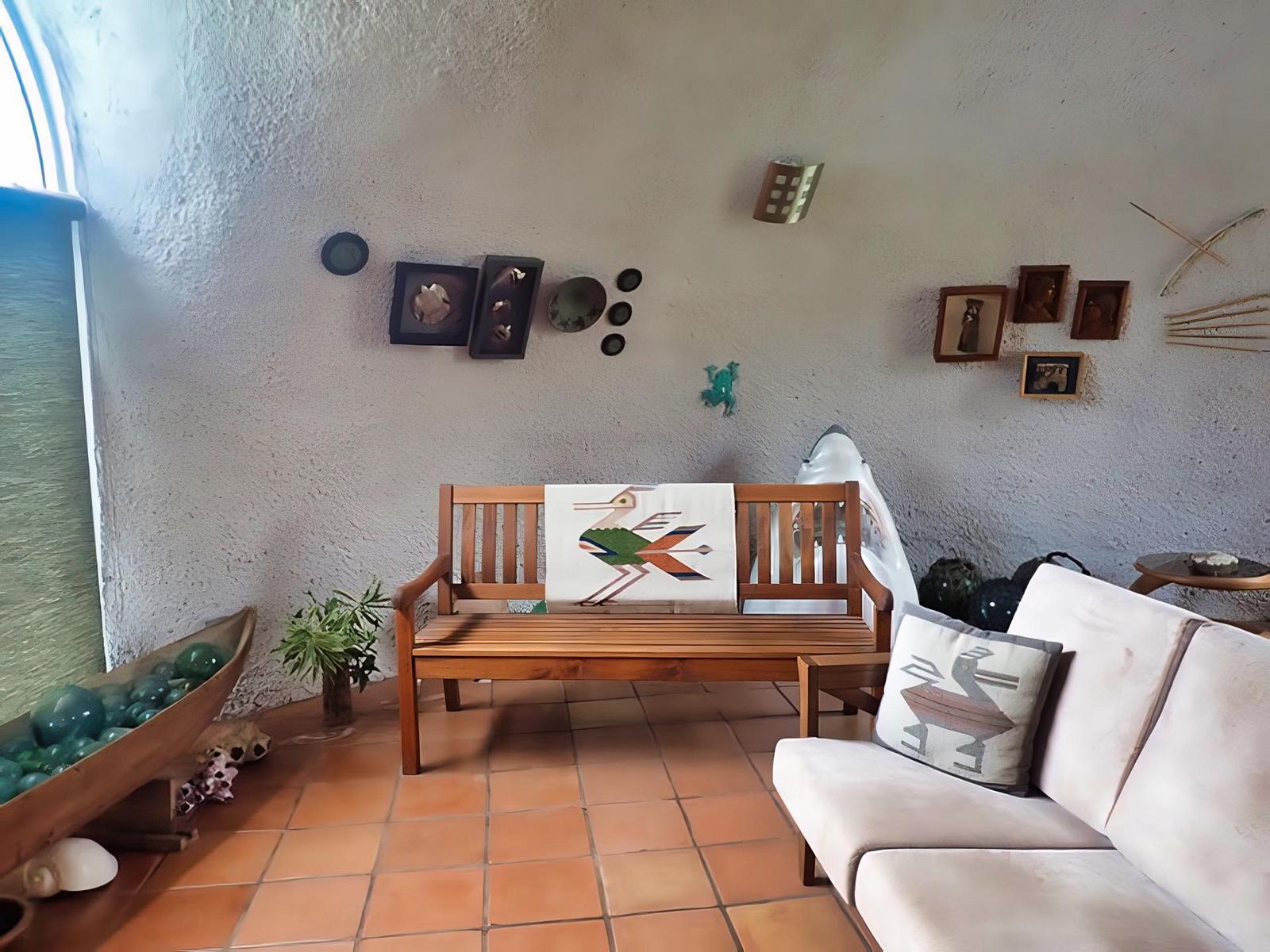
Linda and Stanley have chosen the furnishings and decor of their spherical beachhouse with an eye to comfort, simplicity, and pleasure.
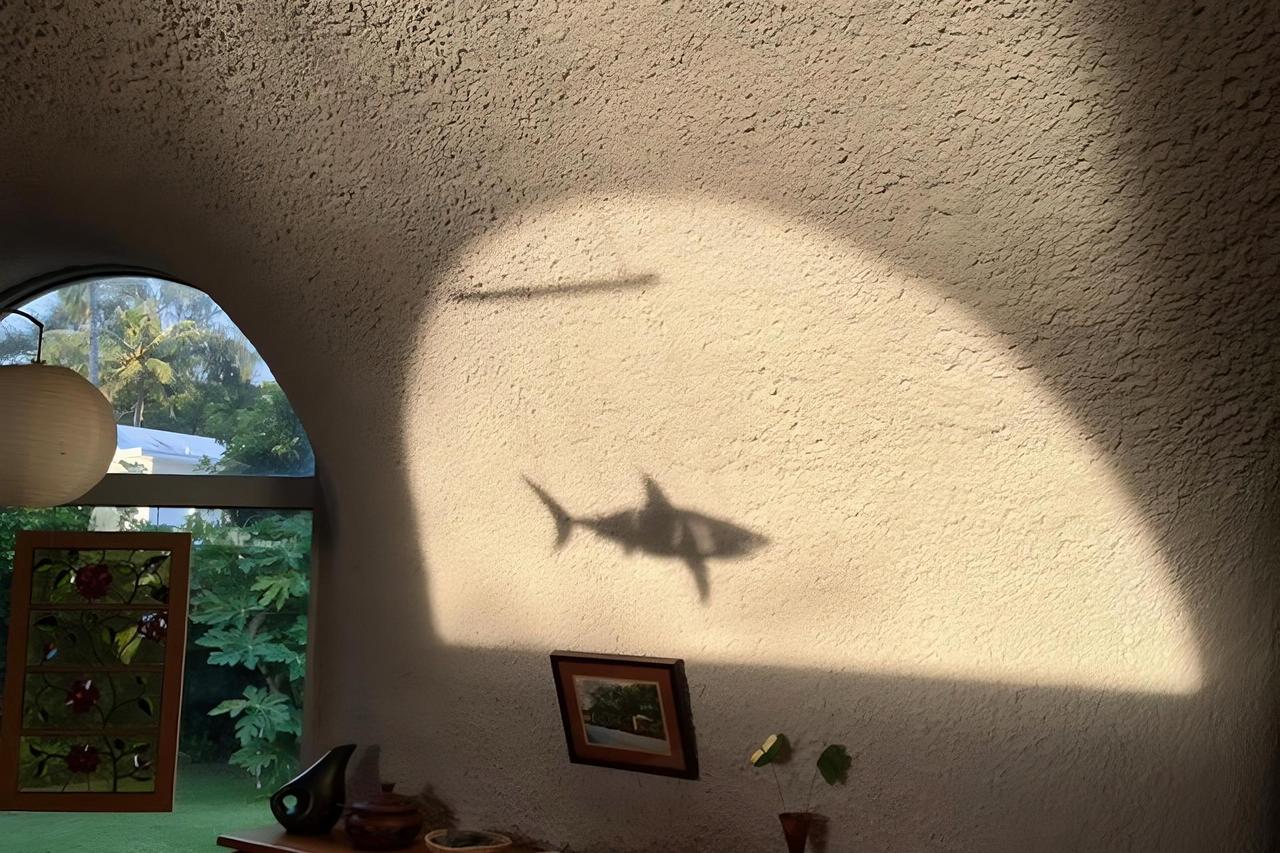
The shadow on the wall behind Linda’s desk looks like a bit like a shark swimming in its own dome home.
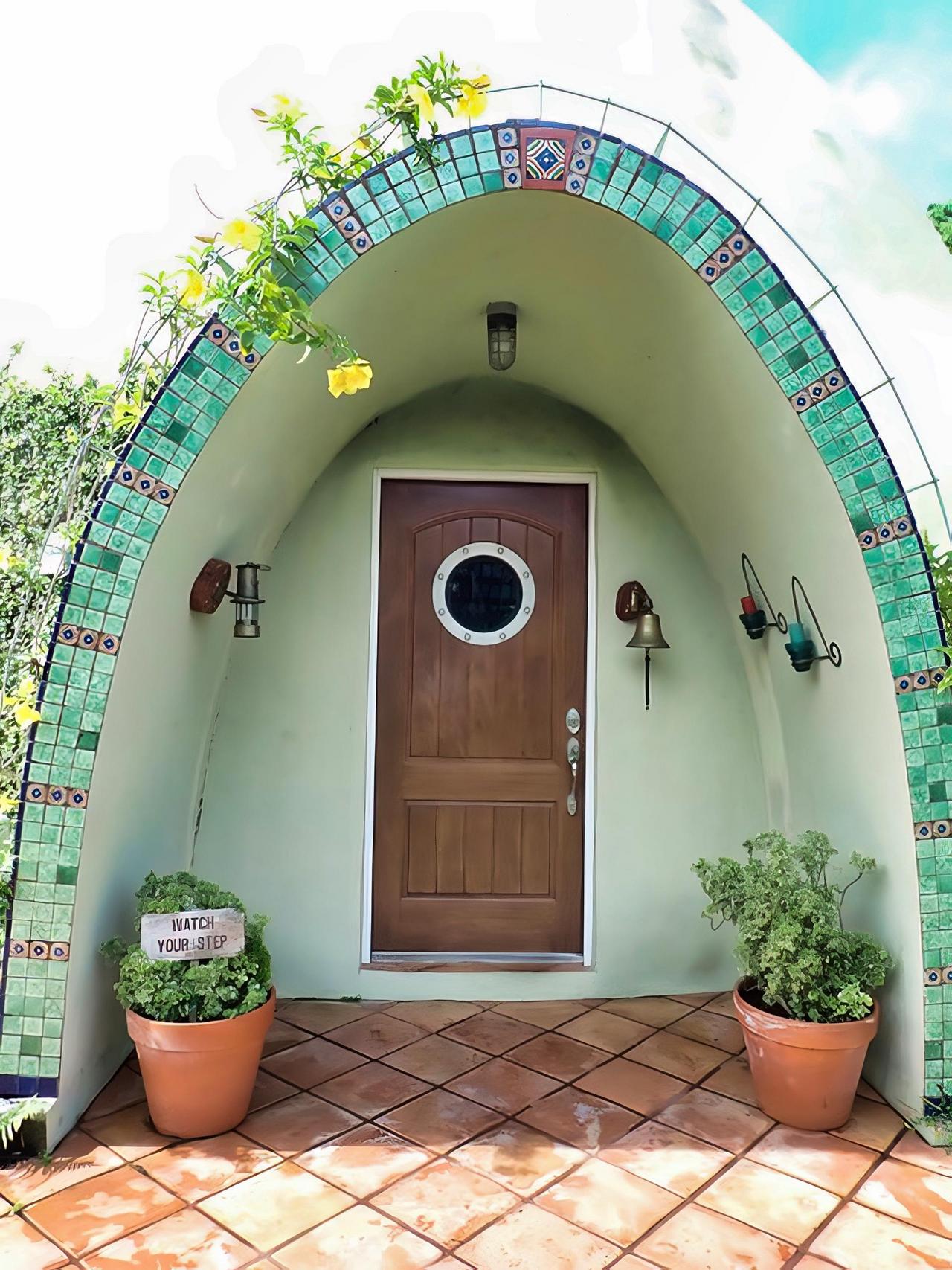
A ship’s bell, a round window shaped like a porthole, and an artistic arch dotted in azure and umber on shades of sea green greet everyone entering Tasi Dome.
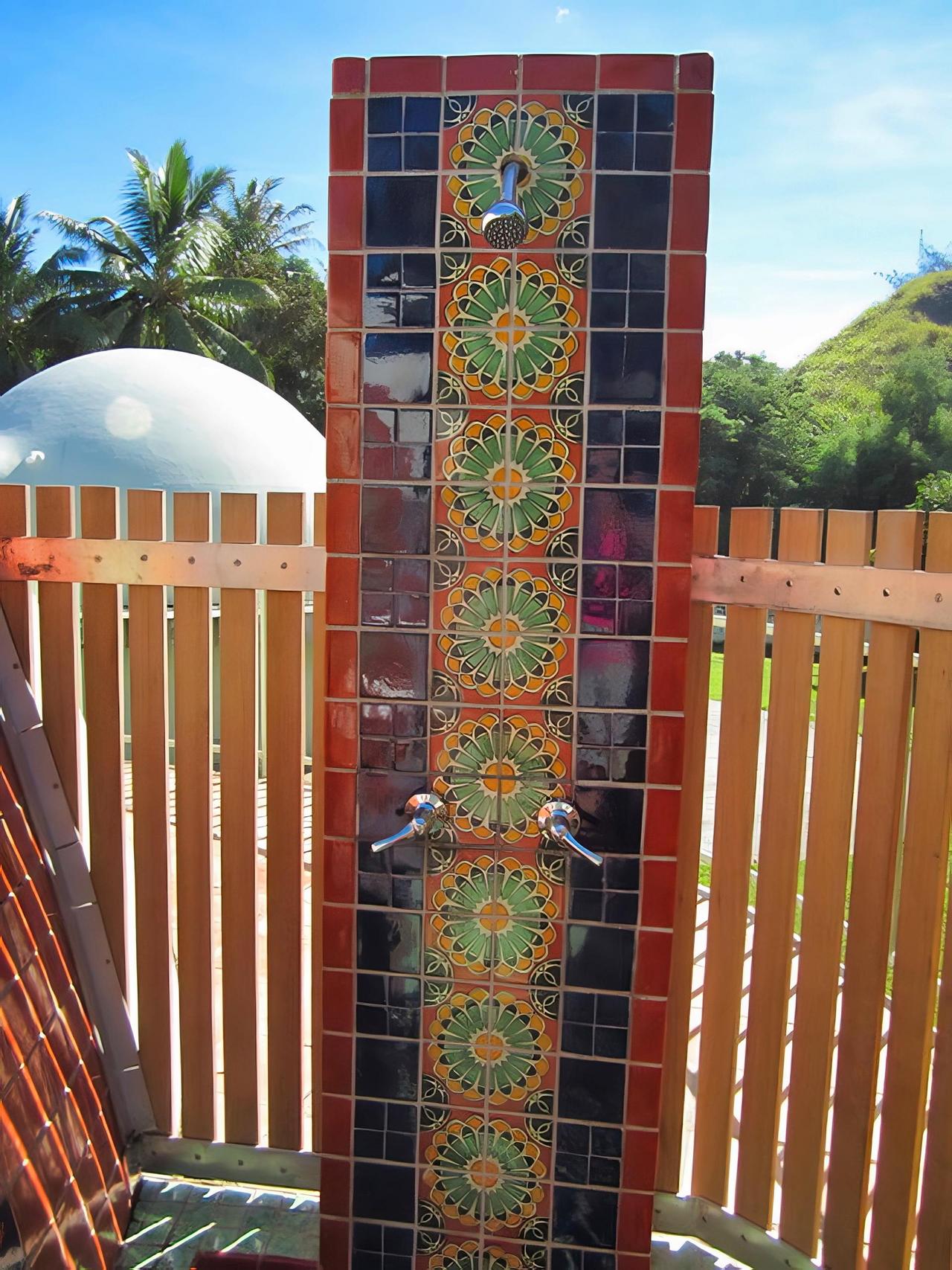
The exquisitely tiled, artistic outdoor shower affords complete privacy with a panoramic view of the sky.
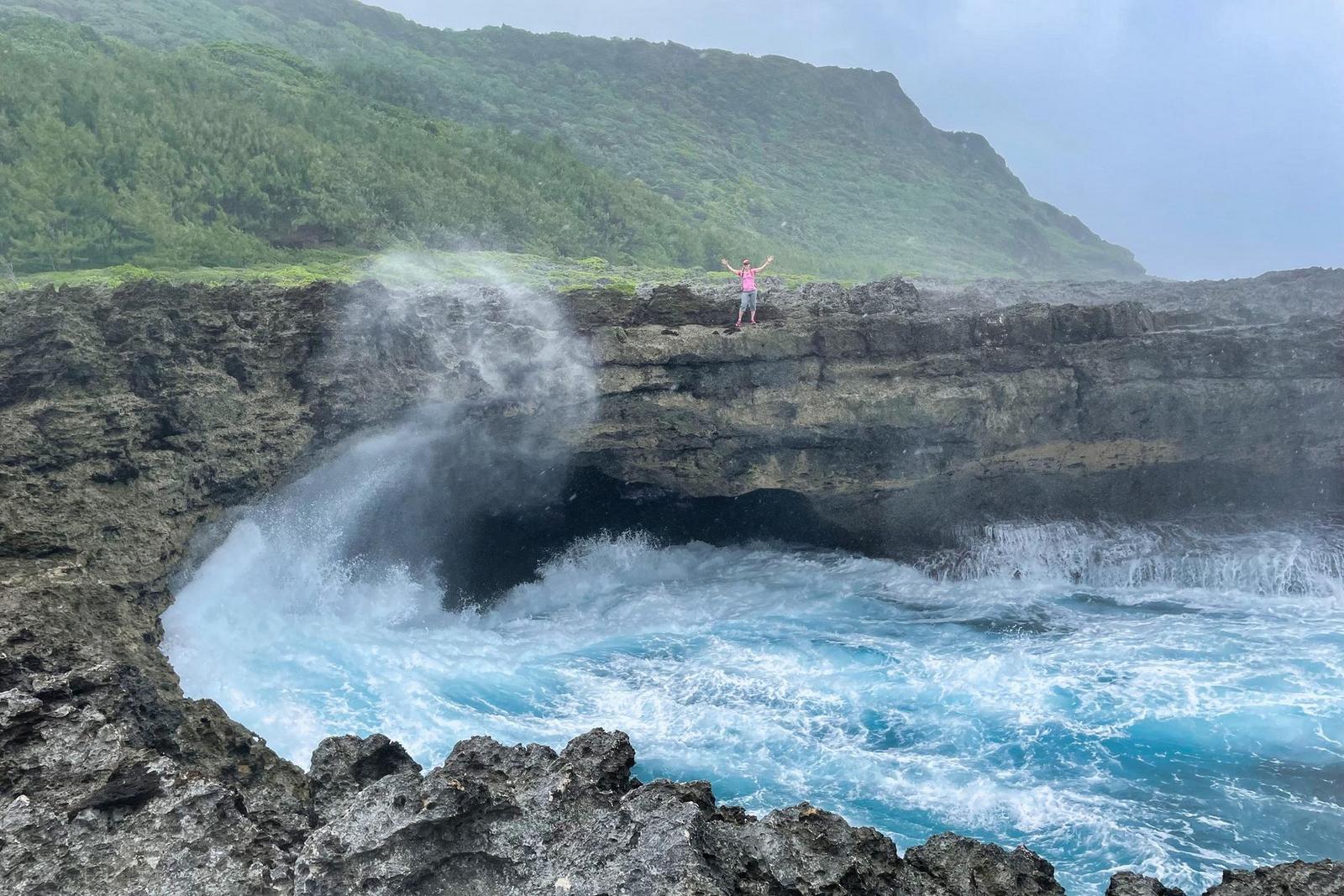
Linda and Stanley both really enjoy hiking all the trails and paths they can find. The indigenous people of Guam are the Chamorros, and one ancient creation story says that before ocean or earth began, a great mist covered the universe.
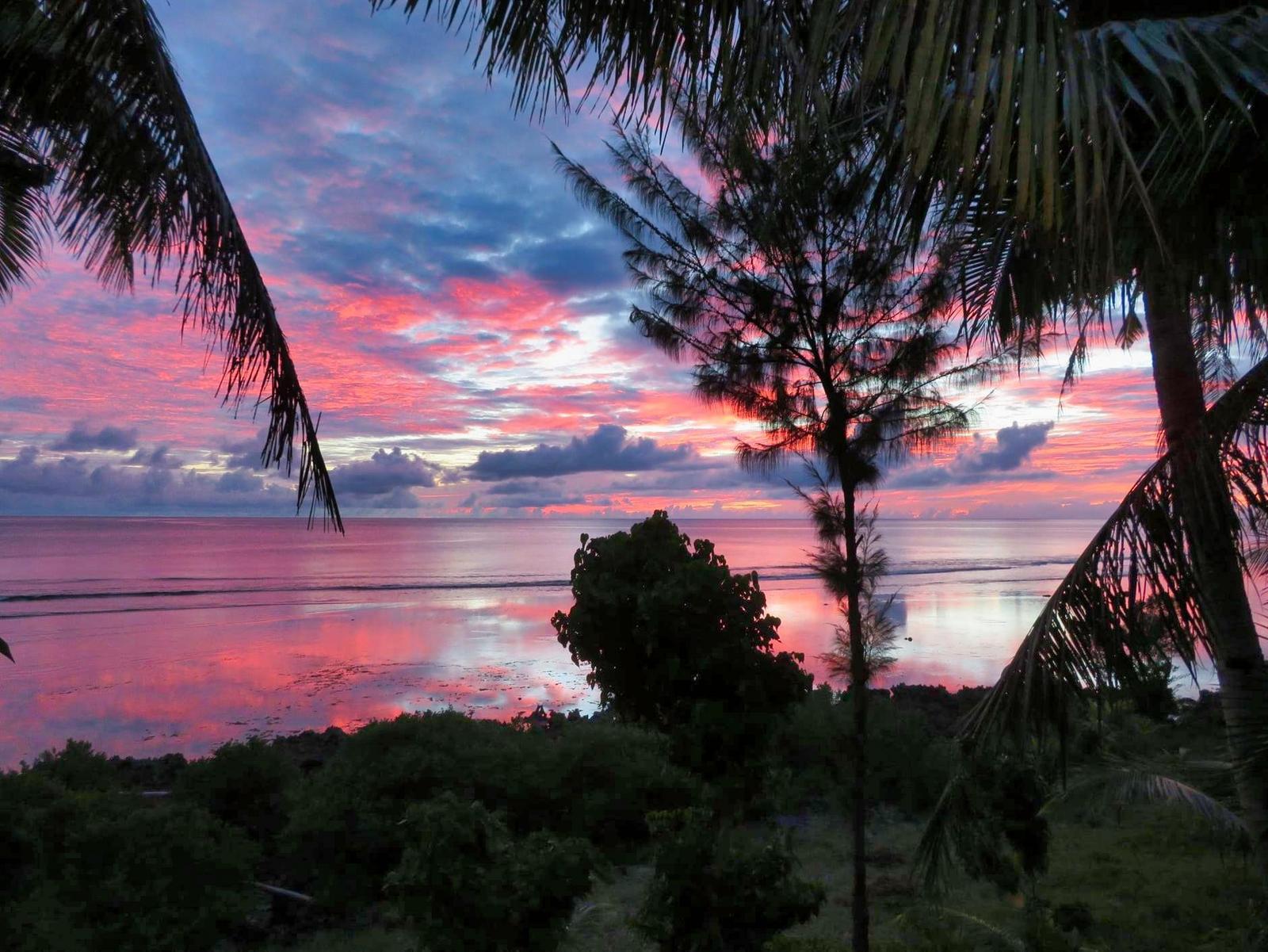
Stanley Hall, a harbor boat pilot, and Linda Tatreau, a marine biology teacher, knew they needed to site their forever home with an ocean view. As the days flow into years, they revel in the sight of the ever-changing light dancing on the water.
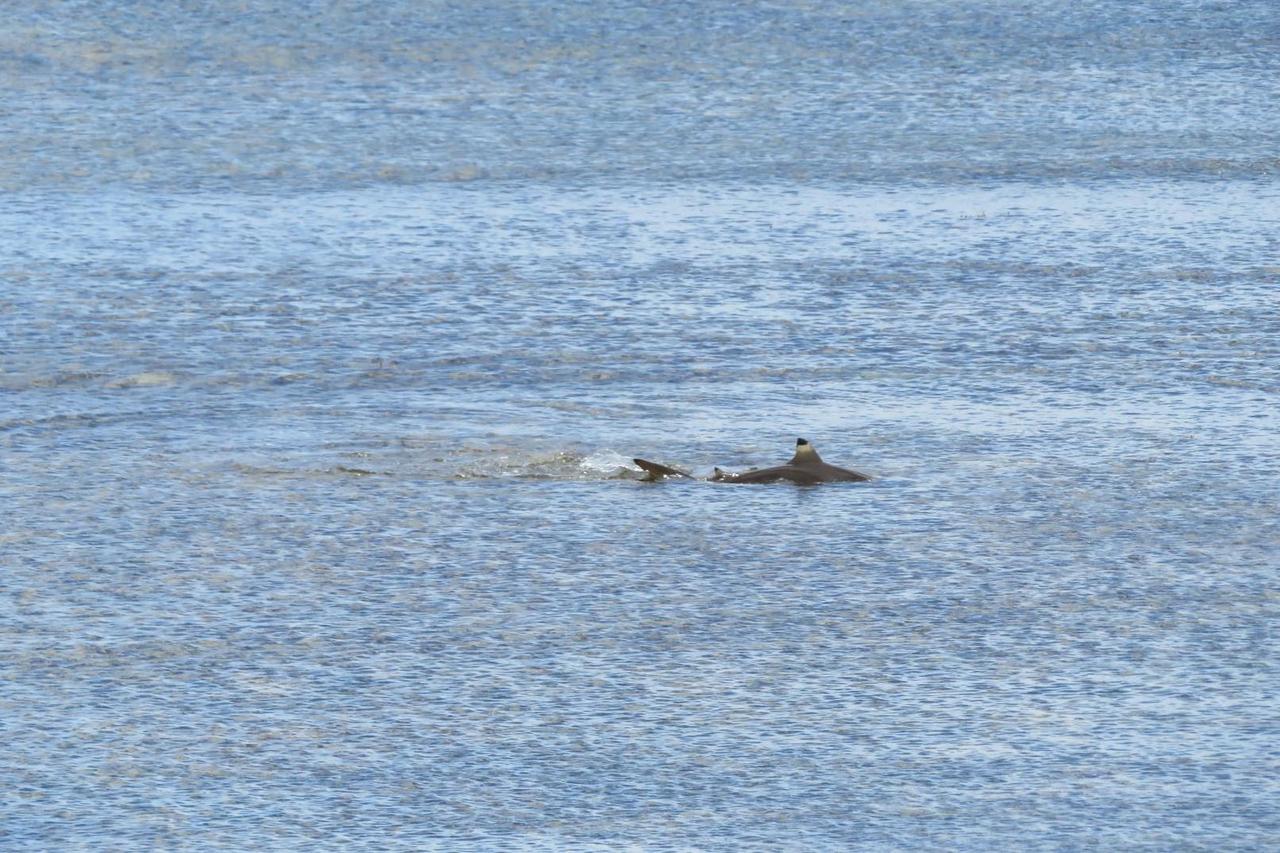
Linda and Stanley delight in seeing black tip reef sharks in their front yard. These sharks prefer relatively shallow water. These swift, shy sharks can grow to eight feet in length.
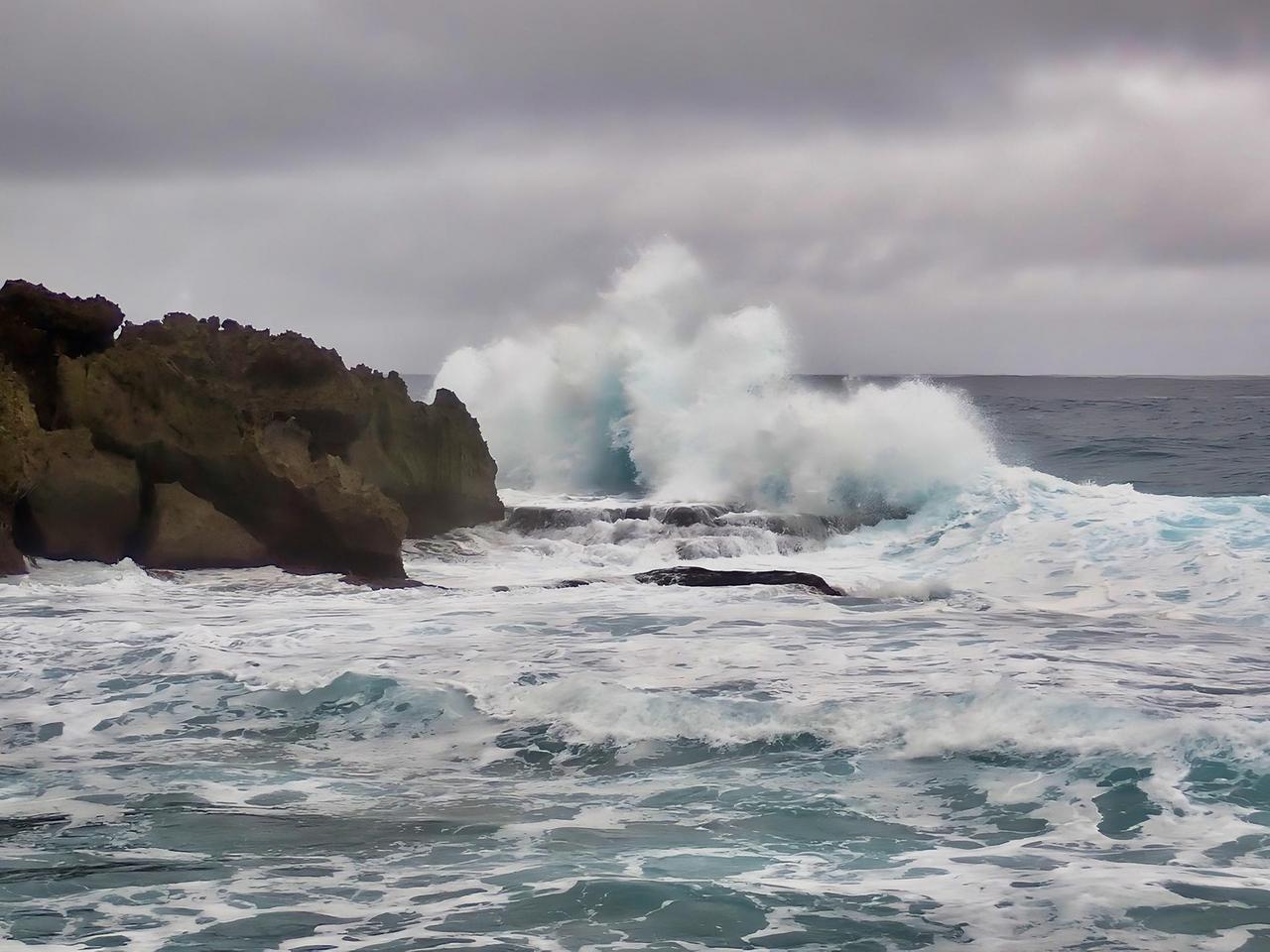
Typhoon Mawar left 98 percent of the island without electrical power before it spun across the Western Pacific Ocean. The 212 square mile island formed millions of years ago as volcanic rocks exploded under the ocean.
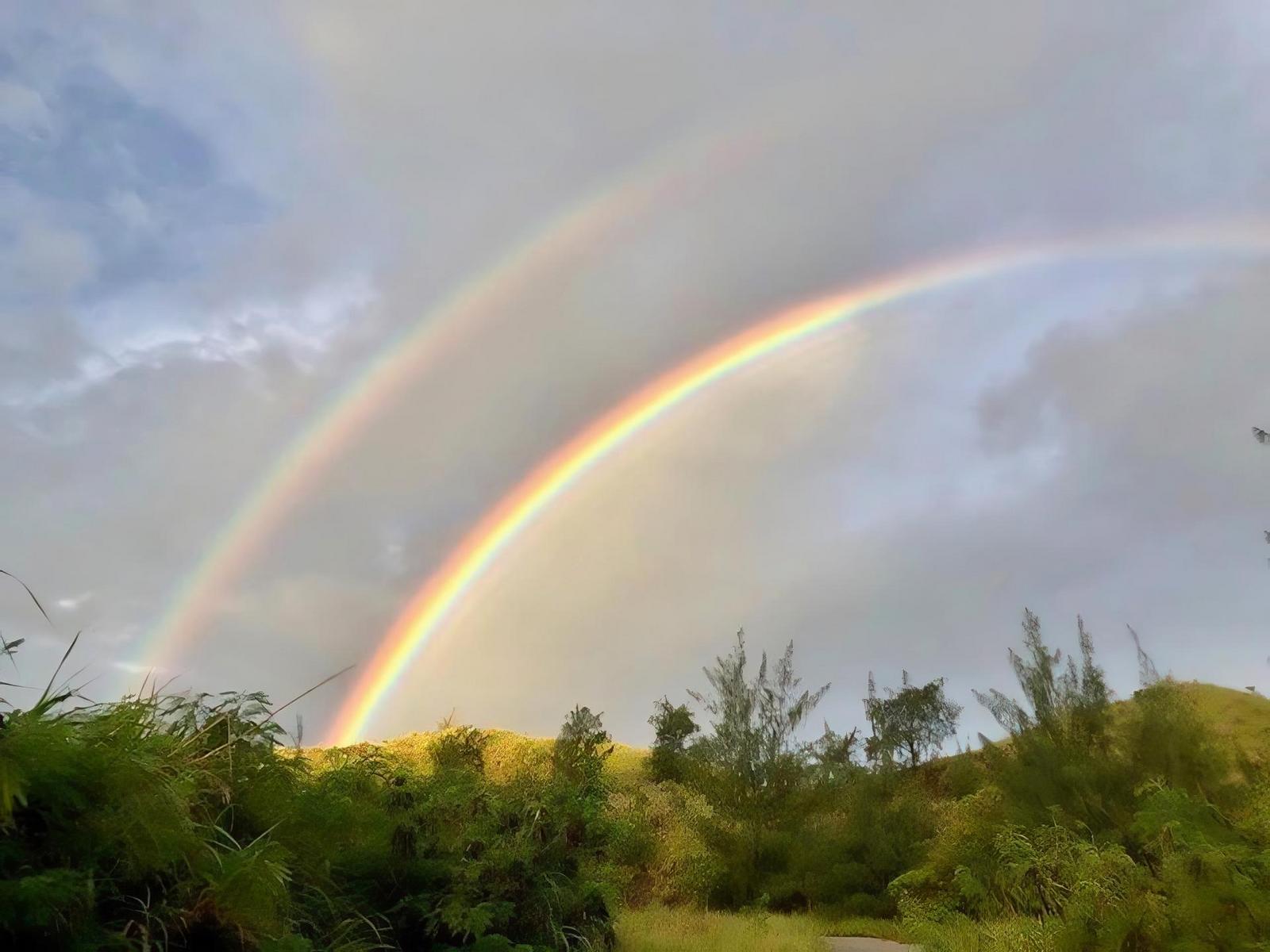
When sunlight reflects twice within water droplets, light bends when it hits a drop, reflects off the drop, and then bends again as it leaves the drop. The second bow’s pattern shows the reverse of the first rainbow.
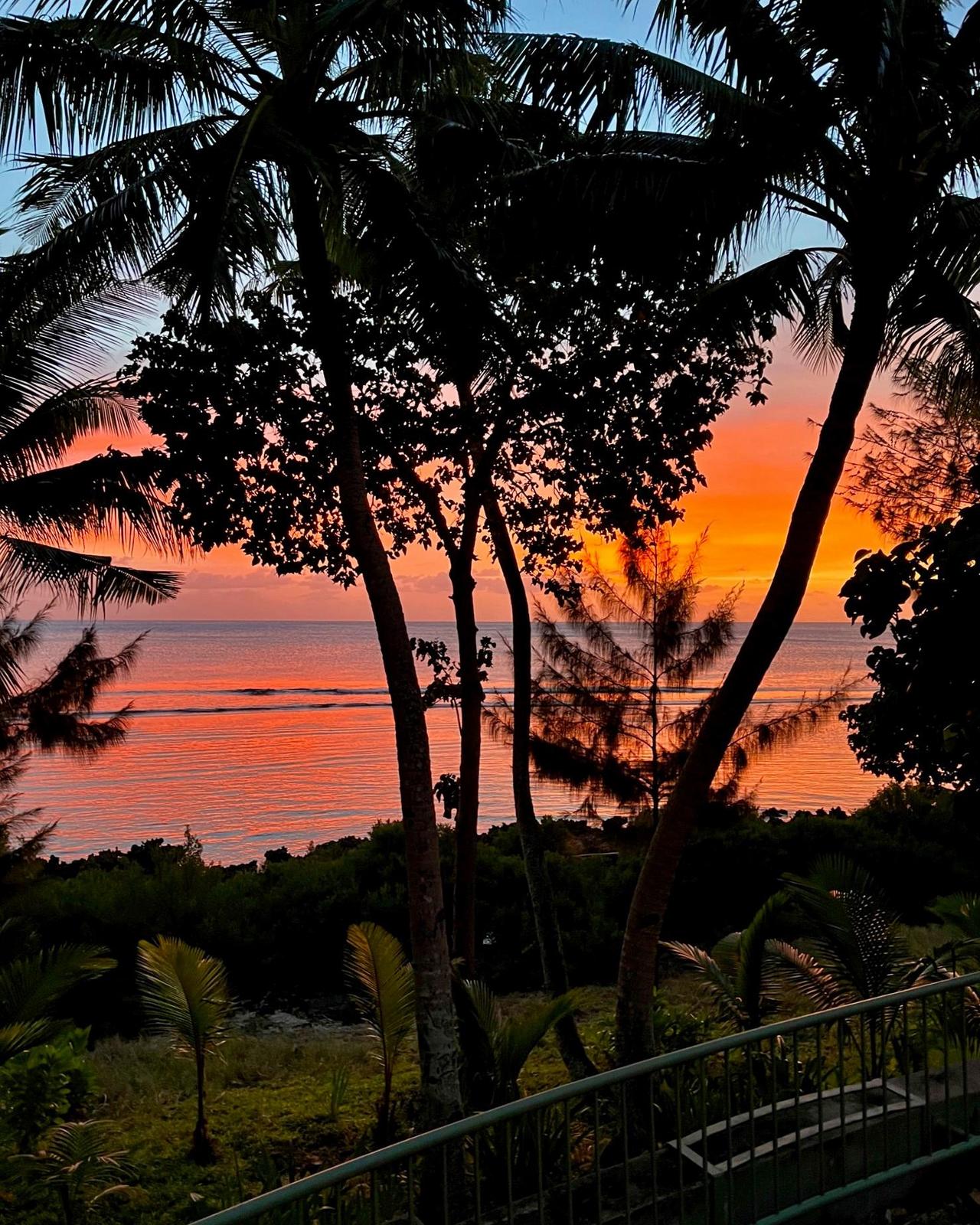
Linda takes dozens of photos of all she sees, capturing as many moments as she can of a place she calls paradise.
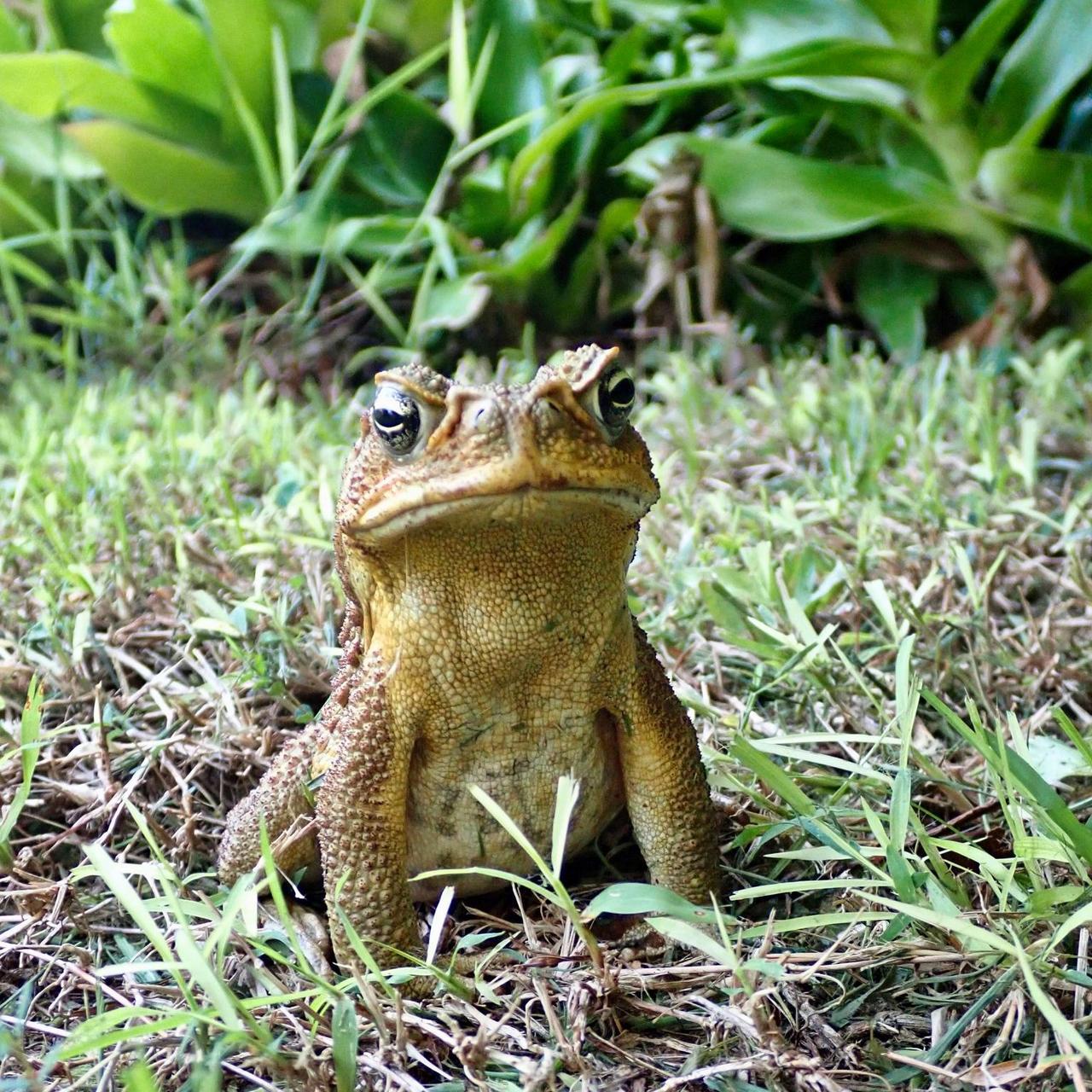
Linda keeps a special place in her heart for all toads. Guam has no native amphibian species, but nine amphibian species have found their way there.
